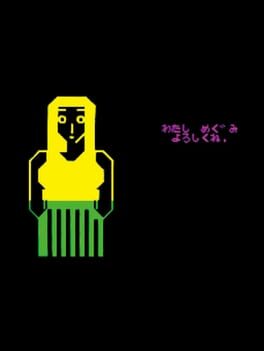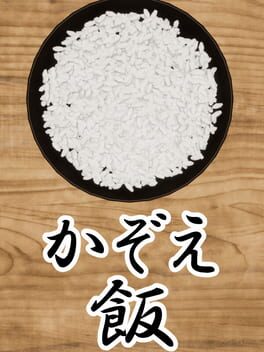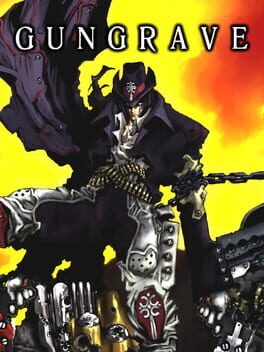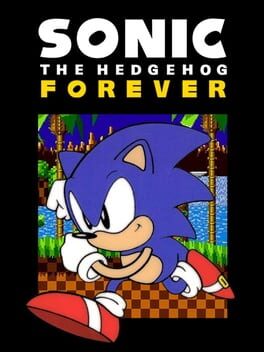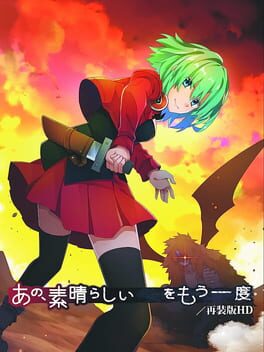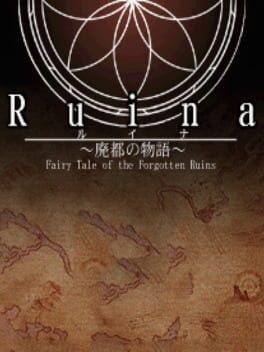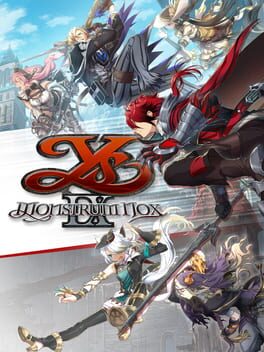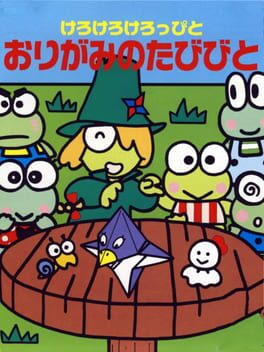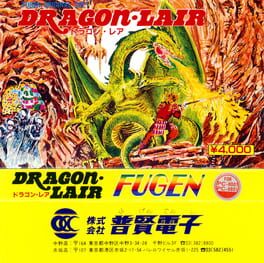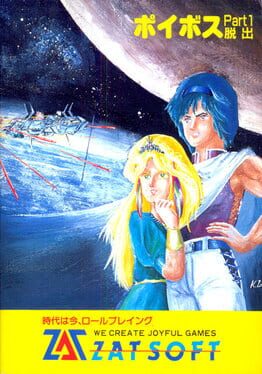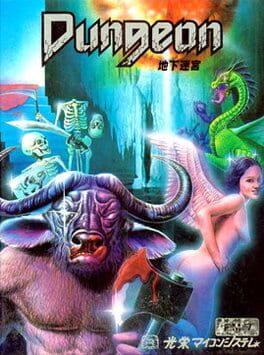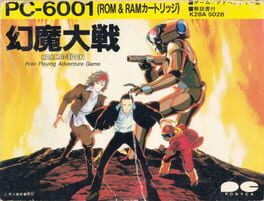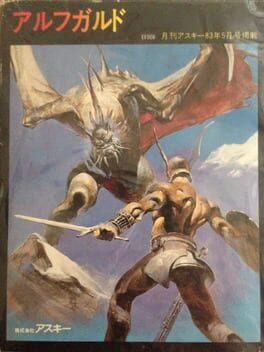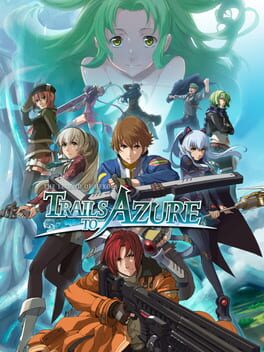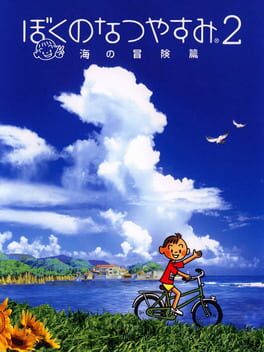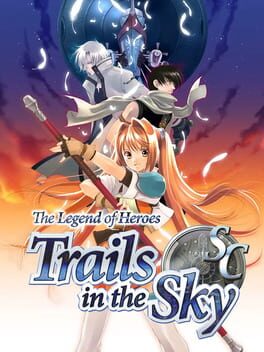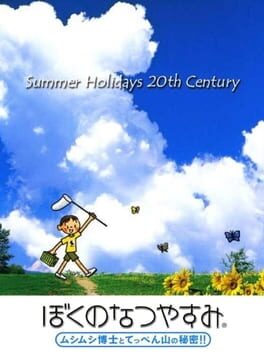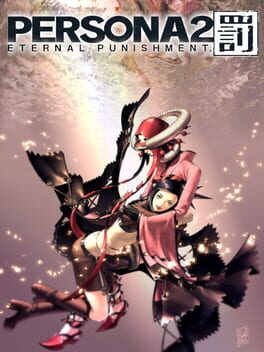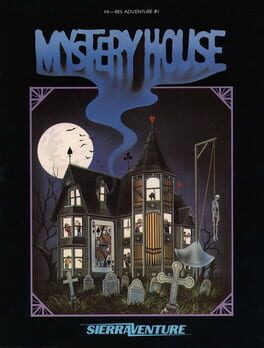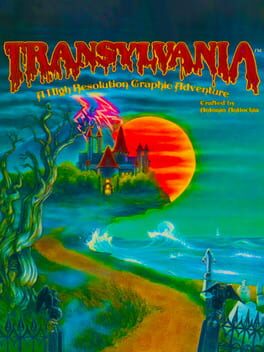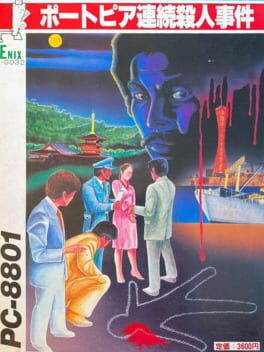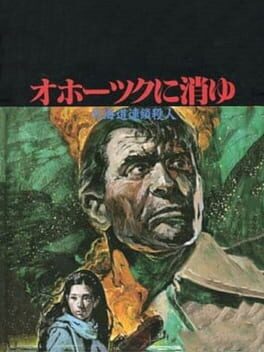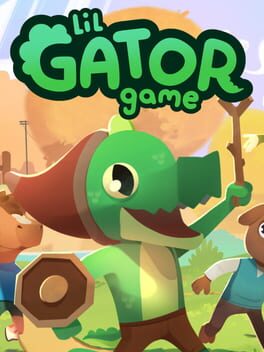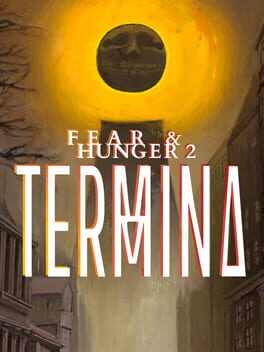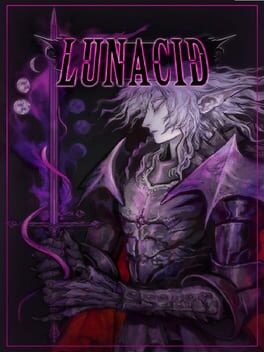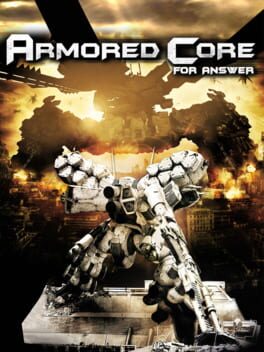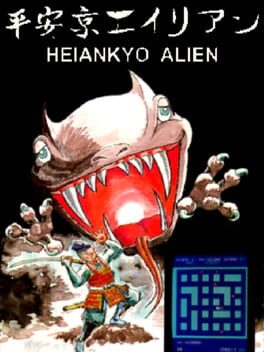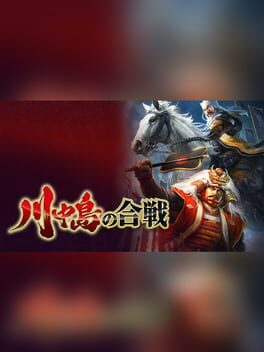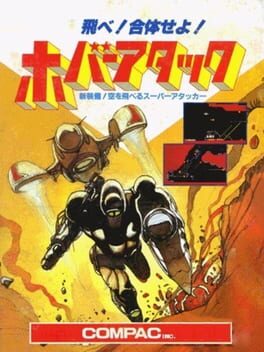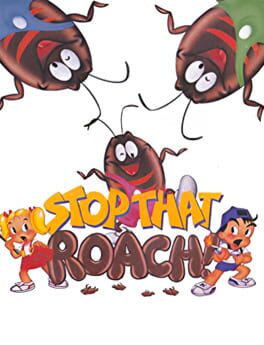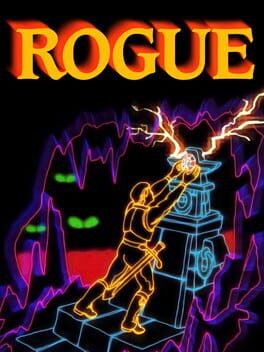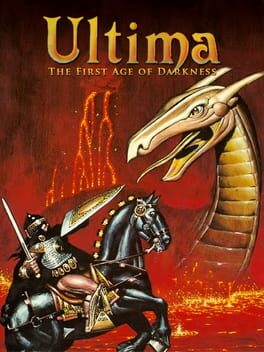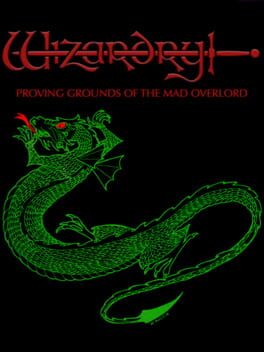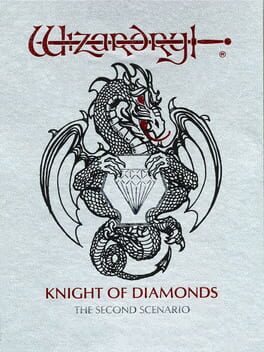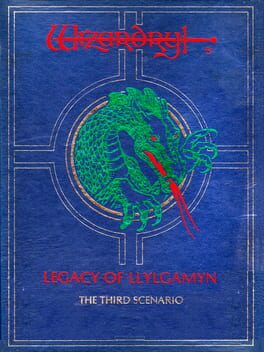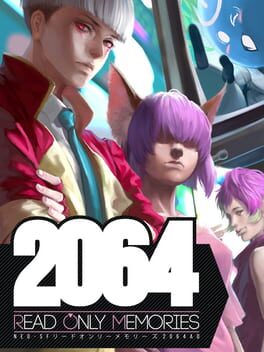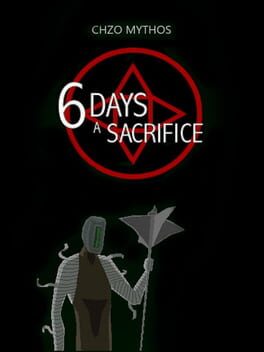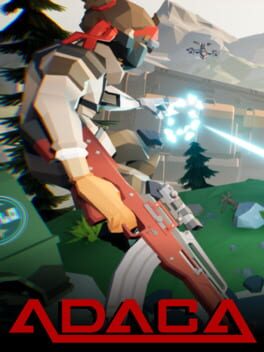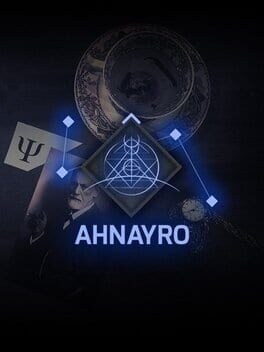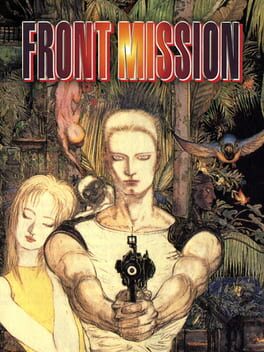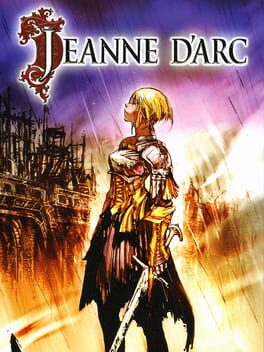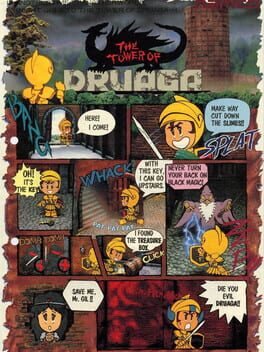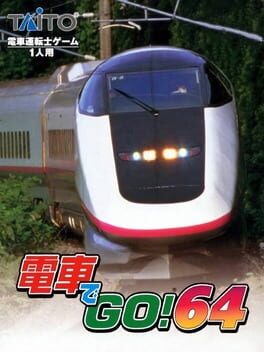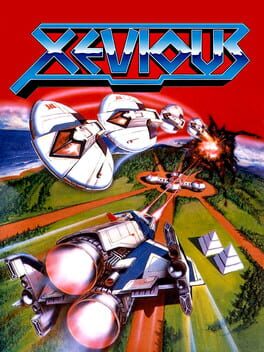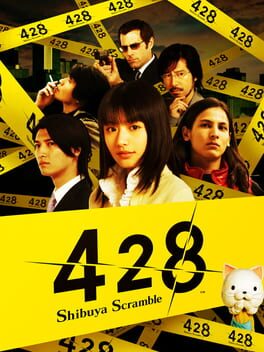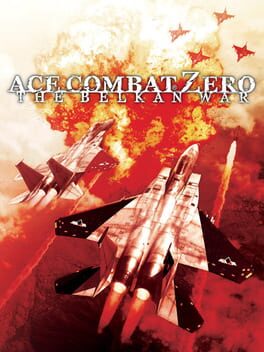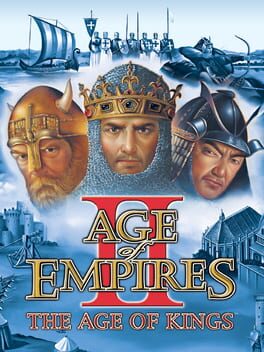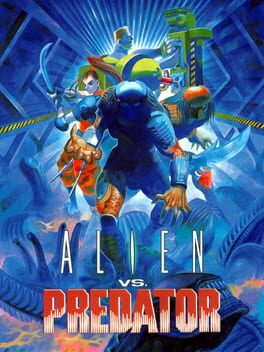28 reviews liked by Baxter
Yakyuuken
1979
I Uncovered the First Eroge Ever and it’s THIS?? (LOST MEDIA!!!) 😱
(Available on Bump Combat with photo accompaniment)
(Also on Gaming Alexandria)
One year ago, after weeks of intensive research, I put together a culmination of available knowledge on dB-Soft’s notorious, under-documented 177. My intent was for this to be the first of many projects detailing the cultural role and history of key eroge works. My research into 177 bore fruit for seemingly countless historical forays into the likes of Lover Boy, Lolita Syndrome, Night Life, and Emmy. Information on these titles was somewhat scant to be sure, but there was enough to construct a narrative. Lover Boy was knocked out in a couple days, and in revisiting my list of potential topics I was intrigued by a title I’d popped on there without much thought:
Yakyūken (Hudson Soft, n.d.)
Supposedly this predated Koei’s Night Life and even On-Line Systems’ Softporn Adventure by quite some margin, though the specific date was up for debate if not entirely lost. If I were to talk about PSK’s Lolita: Yakyūken at some point, surely it would make more sense to tackle its progenitor first. This presented a few problems. First, there is not exactly a plethora of information about this primitive eroge. Second, it seems to have left no impact. Third, there was no way to play it. For all I knew, Yakyūken did not even exist in the first place, and if it had, nobody had bothered to back it up. VGDensetsu had collated some basic information and screenshots,[1] and BEEP had acquired a copy in 2015,[2] but these only served to tease me, increasing my appetite for forbidden fruit. The type-in version printed in MZ-700 Joyful Pack only had one page of the code documented online, and a search of previous Yahoo! Auctions listings for either cassette came up empty. But MZ-700 Joyful Pack seemed to turn up frequently, that seemed the best course of action.
Unwilling to wait for it to be listed on Yahoo! Auctions again, I turned to Kosho, Japan’s secondhand bookstore search engine. Finding one listing, without a picture, I took a gamble on a copy of what appeared to be the right issue of MZ-700 Joyful Pack, and patiently waited. A month later, it arrived at my door, and while it looked different from the one I had seen online, I excitedly opened it up, flipping through each page for my treasure. Were I looking into computerised Shogi, Go, and Mahjong, I would have found it. Every type-in was a trainer, solver, or some other supplementary program for these three Japanese board games. The trail turned ice cold. Distraught, I resigned myself to searching Yahoo! Auctions weekly for the correct MZ-700 Joyful Pack or a Yakyūken cassette. After another month, the same tape I had seen on BEEP popped up; HuPack #2 for Sharp MZ-700.
Forty years old. Dirty. Discoloured. Untested. I set up my bid in a panic, shaking with anticipation for the next four days, pleading nobody would top my already high bid. I won, it reached my proxy after a week, it was on its way. Quaking as a leaf in a stiff wind, it arrived. Quickly it dawned on me my tape deck had been broken for years, but some kind folks at Gaming Alexandria thankfully offered to dump and scan it on my behalf.[3] After many months of searching, this seemingly lost progenitor to the entirety of erotic gaming was available again. Nobody particularly cared, but I had the first piece of the puzzle I needed. Tape back in hand, I imported a copy of Miyamoto Naoya’s seminal Introduction to Cultural Studies: Adult Games, the first edition of Bishōjo Game Maniax, Sansai Books’ 35 Years of Bishōjo Game History, and Maeda Hiroshi’s Our Bishōjo Game Chronicle, the only books I could source that made mention of Yakyūken.
Only problem was, what exactly is Yakyūken. Why are we stripping while playing rock paper scissors in the first place?
On the Origins of Rock Paper Scissors
Though now effectively ubiquitous across a multitude of cultures, rock paper scissors type hand games (ken) have enjoyed an astounding popularity in Japan since the eighteenth century. Brought to Japan from China sometime before 1743, the original form of Japanese ken is referred to today as kazu-ken, Nagasaki-ken, and hon-ken (“original ken”). Players sat opposite one another, showed any number of fingers on their right hand, and called out a guess as to what the sum of the fingers would be. The left hand counted one’s wins, and the loser of a set was made to drink a cup of sake. With its specific hand movements, Chinese mode of calling numbers, and embedded rules of drinking, kazu-ken flourished in the red-light district of Yoshiwara.[4] Its exoticism in the time of sakoku and Japanese Sinophilia no doubt contributed to its proliferation. However, the theatrics and, as Japanologist Sepp Linhart argues, ritualistic rules made the game difficult to penetrate for those not in the know, a far cry from the rock paper scissors we know today.[5]
Subsequent iterations of ken remedied the complications through the familiar sansukumi-ken (“ken of the three which cower one before the other”) format.[6] A wins over B, B over C, C over A. In its first iteration, mushi-ken, the frog (represented by the thumb) defeated the slug (the pinkie) which won over the snake (index finger). Itself another cultural import from China, mushi-ken gradually acquired a reputation as a game explicitly for children[7], but what won over it culturally was kitsune-ken, later Touhachi-ken. The kitsune trumps the head of the village which wins over the hunter which kills the kitsune. This two-handed ken was more popular among adults in and out of districts like Yoshiwara, particularly as the basis for libations or stripping.[8] The accompanying song, dance, and act of playing kitsune-ken as a strip-game were known as chonkina, the loser doffing an article of clothing until one was bare. Clearly intended for adult entertainment, chonkina nonetheless made itself known to children in time, as recalled in Shibuzawa Seika’s Asakusakko:
"Two children, standing opposite to each other, after having put together the palms of their hands right and left as well as alternately, finally make one of the postures of fox, hunter or village headman to decide a winner. The loser has to put off a piece of what he is wearing every time, until one of them is stark naked. To see the little children on cold winter days trembling, because one after another piece of cloth was stripped them off is a strange scene which can no longer be seen today."[9]
As the nation opened to foreigners again, chonkina became well known among foreigners, and due to the bad reputation it was bestowing to Japan, it was outlawed from September 1894 onward.[10]
Children’s mushi-ken would go on to evolve into jan-ken, the rock paper scissors with which we are familiar, but the specifics of when and how are unclear and unimportant for our purposes. Jan-ken was the preeminent ken by the end of the Meiji period, and ken on the whole was relegated to the realm of children. However, as a game intimately familiar to nearly all Japanese beyond childhood, the simple, fast-paced trichotomy of jan-ken, alongside its association with punishment systems like drink and stripping afforded jan-ken staying power beyond childhood.[11] It is a game which effectively boils down to luck, allowing for decision-making that, if nothing else, is understood to be fair.
Putting the Yakyū in Yakyūken
It’s October, 1924 in Takamatsu. To break in the new ground at Yashima, nearby industrial companies and technical schools are holding a baseball tournament. In a crushing defeat of 0-8, the team from Iyo Railway (later Iyotetsu) was humiliated by the Kosho Club, composed of students from Kagawa Prefectural Takamatsu Commercial School (now Kagawa Prefectural Takamatsu Commercial High School). [12] Later that night, the teams held a get-together at a nearby ryokan, putting on enkai-gei (“party tricks”). Manager of the Iyotetsu team and senryū poet, Goken Maeda, devised an arrangement and choreography of the 1878 nagauta piece “Genroku Hanami Odori.” The Iyotetsu team danced to shamisen in their uniforms to the delight of those in attendance. This first iteration of what would become Yakyūken (literally “baseball fist”) was based on the Japanese rock paper scissors variant kitsune-ken, but by 1947 it came to reflect now common variant jan-ken.[13] The Yakyūken performance was repeated at a consolation party in Iyotetsu’s hometown of Matsuyama, quickly gaining popularity therein and throughout Japan as the team performed it while on tour.[14]
The camaraderie instilled in audiences by the Iyotetsu team’s dance, and its spread as enkai-gei, led to many localised instances of this new form of jan-ken being performed.[15] The specifics of how prevalent it became are impossible to discern, but what is known is that Yakyūken, as with the earlier kazu-ken and kitsune-ken, became another diversion used as an excuse to imbibe and to disrobe.
野球するならこういう具合にしやしゃんせ ~ソラ しやしゃんせ~
投げたら こう打って 打ったなら こう受けて
ランナーになったらエッサッサ ~アウト・セーフヨヨイノヨイ~
It’s 1954. Contemporary Ryūkōka artists Ichiro Wakahara and Terukiku of King Records,[16] Yukie Satoshi and Kubo Takakura of Nippon Columbia,[17] and Harumi Aoki of Victor Japan[18] have all released 78 rpm singles with their own takes on Yakyūken. This musical multiple discovery of a still relatively local song brought into question where it had actually originated, with a photograph of the Matsuyama consolation party cementing Goken Maeda as its creator.[19] With this, Maeda’s original, non-chonkina song and dance came to be understood as honke Yakyūken, the orthodox iteration, the way it was meant to be. As the dance spread, alcohol flowed and clothes were shed. In an attempt to preserve the sanctity of Maeda’s phenomenon, fellow poet Tomita Tanuki established an iemoto system for honke Yakyūken around 1966, formalising its lyrical structure and attempting to preserve Yakyūken as a way, not unlike sumo. As iemoto, Tanuki in effect declared himself to be the highest authority on honke Yakyūken — it did not and would not matter how Yakyūken was actually enjoyed colloquially, only what the iemoto approved of constituted the real thing. At the same time, the city of Matsuyama introduced a new taiko performance — the Iyo-no-Matsuyama Tsuzumi Odori — for that year’s Matsuyama Odori festival. While it was popular, it lacked regionalism, and so in 1970, it was replaced with Yakyūken Odori.[20] It wasn’t just local flavour, however, as the year prior Yakyūken became a national phenomenon for more unsavoury reasons.
Birth of a Sensation: Yakyūken Breaks Into the Mainstream, or Tits Out for TV
Just as in the United States, the 1960s in Japan were marked by an increase in individuals’ buying power and the proliferation of television. Whereas the prior decade relegated television sets to the homes of the wealthy or in street-side display windows, by 1970, 90% of Japanese households owned at least one television set.[21] The penetration of the entertainment sphere into the domestic realm led to a berth of variety and comedy shows, all emphasising the joys of laughter. This proliferation rose concerns among cultural critics in the 1960s, with fears that the often lowbrow, thoughtless humour which frequently lampooned violence and sexuality were unsuited to the home, particularly where children might be watching.[22] Furthermore, such programming was becoming increasingly rote and prescriptive in its approach, thereby lessening its effect with each broadcast, making this new mode of entertainment lascivious and boring. In breaking free of an ever rigid mould, Japanese television’s saviour came in the form of Hagimoto Kinichi and Sakagami Jirō’s comedy duo Konto 55-gō. Pronounced as “konto go-jyuu go gō,” the name’s syllabic tempo, evocation of go-go dancing, and abstruse referencing of baseball player Oh Sadaharu’s 55th homerun of the 1964 season all brought about a rapidity and contemporary sensibility fitting of the pair’s comedic stylings.[23]
From their television debut in 1967, Konto 55-gō demonstrated a dynamic physicality in stark contrast to similar acts, often moving so fast that cameras could not keep up with them, the laughter of the audience sometimes being the only indicator of a punchline’s delivery.[24] While a breath of fresh air, cultural critics lambasted this seeming over-correction as yet again inappropriate for home audiences. On the other hand, audiences adored the duo’s comedy, with renowned Buddhist nun, translator of Genji Monogatari into modern Japanese, and self-described Konto 55-gō fan Jakucho Setouchi (then known as Harumi Setouchi) saying Kinichi and Jirō made her “laugh so much that [her] stomach ached."[25]
This focus on unpredictability, shattering of expectations and conventions, and need to perpetually one-up themselves, Konto 55-gō chased and reinforced the proliferation of what Allan Kaprow described as ‘Happening.’ Originally coined in 1959 in reference to art-related events in which the artist took on theatrical directions and modes of expression, Happenings flourished throughout the United States through the 1950s and 1960s, spreading globally but predominantly in Germany and Japan.[26] In the context of the Japanese television industry, ‘Happening’ was co-opted to refer to anything unscripted — quite the opposite from its intent as a label for deliberate performance — after the early 1968 program Kijima Norio Happuningu Sho (“Kijima Norio’s Happening Show”).[27] To be clear, Happenings in this context were still partially staged just as art Happenings were, but the intent from producers was that Happenings would go off the rails by virtue of a lack of scripting and the co-operation and involvement of audience participants. As other shows and producers chased this spontaneity and carried in the wake of Konto 55-gō’s pioneering transgressions, the stakes became higher and content needed to become more compelling, more novel, more edgy, more risque.
The most critical apex of Happening for our purposes came in 1969 on Konto 55-gō no Urabangumi o Buttobase (“Konto 55-gō Blow away the competition”). It was here that Yakyūken was introduced as a segment of the program, with Kinichi and Jirō facing off against numerous women, each stripping an article of clothing upon a loss. Removed articles were then auctioned to raise funds for children orphaned by traffic accidents.[28] The segment was an enormous hit among adults and children, some critics praising this nakedness as incredibly real, the pinnacle of the Happening.[29] At the same time, just as with all of Konto 55-gō’s antics, many loathed this primetime strip tease wholly inappropriate for children to view, some citing it as a siege against one of the sole bulwarks left against Japan’s growing moral decline, the home.[30] Scorn came not only from without, however, but within as well. Kinichi would later go on to say Konto 55-gō no Urabangumi o Buttobase was his most disliked programme he ever worked on, in no small part due to the Yakyūken segment which brought viewers in not for the comedy of the duo, but for the titillation and obscenity of the Yakyūken act itself.[31] Furthermore, in 2005, Kinichi visited Matsuyama to apologise personally to fourth honke Yakyūken iemoto Tsuyoshitoshi Sawada for misrepresenting Yakyūken. Despite this resentment from Kinichi and some critics, Yakyūken reinvigorated jan-ken into a game with stakes, with merriment, with rules everyone was already familiar with, with a catchy song and dance, that brought the Happening into the real world.
Through Konto 55-gō’s work, Yakyūken presented the same problem that chonkina had in the previous century — a breaking of the boundaries between adult entertainment and the recreation of children. This was no longer bound to the district of Asakusa, but the whole of Japan. Further still, the growing popularity of Yakyūken and its association with Konto 55-gō spread the popular conception of the dance originating as a strip performance, rendering the attempts of Tanuki’s iemoto system to preserve the sanctity of Maeda’s original work increasingly ineffective. The iemoto system only had merit when the associated act could be considered a tradition worth preserving such as tea ceremony or calligraphy. With Yakyūken compromising the cultural zeitgeist as a strip game, it became difficult to consider it a valuable cultural commodity. While it is possible this was the greater underlying reason for Matsuyama’s introduction of Yakyūken Odori to the Matsuyama Odori festival in 1970, it cannot be stated as certainty. What was certain was that Yakyūken was here to stay as a television staple, at least for a moment.
Yakyūken remained a part of Konto 55-gō no Urabangumi o Buttobase through to the end of 1969, afterwards being spun-off into its own program Konto 55-gō no Yakyūken!! From November 26, 1969, thirty minutes of strip rock-paper-scissors littered the airwaves every Wednesday at 9PM until the program was discontinued in April 1970.[32] Yakyūken would not be broadcast on Nippon TV for another two decades, returning on New Year’s Eve, 1993 as part of Supa Denpa Bazaru Toshikoshi Janbo Dosokai (“Super Radio Bazaar New Year’s Jumbo Alumni Reunion”). Though no longer televised in the interim, Yakyūken remained in the cultural zeitgeist as a strip game. While impossible to discern at what point Yakyūken became a mainstay of Japanese pornographic production, it has become ubiquitous — a cursory search of Japanese pornographic clip site eroterest.net gives over 34,000 results for Yakyūken. What is certain is that Yakyūken similarly became not just a mainstay of Japanese erotic video games, but the foundation of the entire industry.
In Which I Finally Tell You About the Video Game Yakyūken by Hudson Soft
With 500,000 yen in starting capital, brothers Yūji and Hiroshi Kudō founded Hudson Co., Ltd. in Toyohira-ku, Sapporo on May 18, 1973. Named after the duo’s favourite class of train, the 4-6-4 Hudson, Yūji and Hiroshi sold fine art photographs of locomotives. In September, the brothers opened a dedicated amateur radio shop, CQ Hudson, which stood at 3-7-26, Hiragishi, Toyohira-ku into the new millennium.[33] After travelling to the US shortly thereafter to market their wares, Yūji saw personal computers on general sale for the first time, inspiring him to bring home a PolyMorphic Systems Poly-88 to Japan and learn to program, taking on two million yen in credit card debt to finance the purchase.[34] Well before the personal computer revolution hit Japan, The Kudō brothers were pioneers. The shops of Akihabara bore no fruit for them, necessitating the Poly-88 import. By 1975, the Kudōs had fully branched out into personal computer products, turning type-in programs into pre-packaged cassette tape releases for the sake of convenience, and becoming early adopters of NEC’s 1976 TK-80 and Sharp’s MZ-80 line of computers.[35] The Kudō brothers also began to start writing their own programs around this time under the development team name Miso Ramen Group.
Hudson released at least thirty-seven games for the MZ-80 line, available occasionally as type-ins in magazines like Micom or in books like MZ-80B活用研究. There was a little bit of everything in Miso Ramen Group’s offerings, from the Maze War-esque Ramen Maze 3D to Othello to Operation Escape, wherein the player had to sneak out of class not unlike Konami’s 1984 Beatles-laden Mikie.[36] In the summer of 1979, Hudson was approached by a computer manufacturer with a proposal to sell their software by mail order with an advertisement in Micom for July 1979.[37] The ads were a success, with the Kudōs recounting later that deposits at the bank took upwards of thirty minutes because tellers thought they might be criminals.[38] Yakyūken’s existence in this initial advertisement makes it plain that the game was developed prior to mid-1979, and the ad was laid bare in a 1996 television documentary special by NHK. Yet Yakyūken’s status as the first commercial erotic game seems to have fallen to the wayside.
The game is incredibly simple, as one might expect from a preliminary type-in program from the late 1970s.[39] The player decides how many articles of clothing they wish themselves to have, not dissimilar from a lives system, and is then introduced to their opponent, Megumi.
わたしめぐみよろしくね。(“I’m Megumi, nice to meet you.”)
A few bars of the Yakyūken song beep languidly from the piezoelectric speaker with a bold OUT!! SAFE!! ヨヨイノヨイ covering the screen. The player chooses グ (rock), チョキ (scissors), or パ (paper). In the event of a tie, the process repeats. Should the player lose, an article of clothing is theoretically removed with no visual indication. Should they win, Megumi is declared ‘out’ and her avatar removes an article of clothing. Shirt, skirt, bra, panties. An eyebrow is cocked when her outer attire comes off, the other joining in twain when her bra comes loose. When she loses her panties, Megumi covers her crotch and shrieks "キャー!!はやくあっちへいって!!" (“Kyaa! Quickly, get out!!”) Game end. The original MZ-80 release was monochromatic, but the later MZ-700 versions were in colour, used to minimal effect. It really is as simple as that.
Who’s on first?
Koei’s first entry in their Strawberry Porno series, Night Life, dominates much of the historical record as the earliest erotic game, particularly in the West. Hardcore Gaming 101, Matthew T. Jones, Wikipedia, and MobyGames (among others) authoritatively claim it to be the first, and on occasion one might see PSK’s Lolita Yakyūken cited in its place, but both works released in 1982, the same year as Custer’s Revenge.[40] ASCII Corporation’s history of the NEC PC-8801 show similar family trees wherein Night Life is the root of all Japanese eroge, its own ancestor being On-Line Systems’ 1981 Softporn Adventure.[41] So too does Pasokon Super Special PC Game 80s Chronicle.[42] When Yakyūken is mentioned by these sources, it is as a possibility, something which might be true but lacks veracity, yet the evidence is plain.
Perhaps Yakyūken was simply too early, releasing before heavy-hitter platforms like the NEC PC-88 or Fujitsu FM-7. The MZ-80 line’s flagship was the MZ-80K, released in 1978. It was available only as an assembly kit, which, coupled with its high retail price of ¥198,000, left it in the realm of the enthusiast and academic (particularly engineering students).[43] While games were blatantly possible on the platform, they were far from the focus, limiting the audience for Hudson’s games, particularly Yakyūken, dramatically. Further still, it was sold primarily through mail order, advertised in niche magazines without pictures. Hudson got paid, and quite well at that, but orders came for a litany of their products. Without knowing this was an explicit game, the prospect of playing digital jan-ken must have paled in comparison to Othello or Hudson’s more arcade-style offerings. By the time it came to the next generation on 1982’s MZ-700, the floodgates had already been opened, and platforms capable of graphics dominated the eroge space.
Perhaps Night Life and Lolita Yakyūken take the historiographical spotlight because they lack the primitiveness of Yakyūken. There is no denying that Yakyūken lacks the graphical fidelity of its descendants. Bound by the 80 column by 50 row display of the MZ-80K, space is limited, colour an impossibility, and everything is comprised of text characters as the hardware could not display graphics. The Japanese character ROM bears no curvilinear shapes apart from circles.[44] The hand signs are malformed, and though your opponent, doesn’t look bad per se, her rectangular body’s attempt at an hourglass figure is not exactly stunning. As games writer Yoshiki Osawa described it in the 2000 book Bisyoujyo Game Maniax, [sic] the visuals lack gender specificity, and exhibit a crudeness that cannot even be called ASCII art.[45] Compared to the full colour illustrations of PSK’s Lolita Yakyūken or even the silhouettes of Night Life, Yakyūken comes up short.
Perhaps Yakyūken was too outdated to catch on without some additional gimmick such as lolicon artwork. The original dance craze had occurred a quarter-century earlier, and it had been barred from television for nearly a decade. By the admission of MZ-700 Joyful Pack, Yakyūken was unlikely to resonate with those who did not grow up in the postwar period. A craze to be sure, but a craze for a generation past, one which had little interest in computing. The type-in’s accompanying text even had to make explicit that Yakyūken had virtually nothing to do with baseball, despite its name, as well as the fact this was a game of chonkina.
What these comparisons ignore is that stunning the world was not necessarily Yakyūken’s purpose. Though sold commercially, projects in its vein from Hudson were as much at home on cassette as they were printed as type-ins. By having their code laid entirely bare, type-ins meant hobbyists dabbling in a brand new technology could visually see and alter the program. The type-in’s purpose was to demonstrate what a computer could do. A user could change Megumi-chan into a man, increase her bust size, style her hair. Perhaps they could do away with jan-ken and replace its symbols with those from Touhachi-ken. Why not increase the number of options available for some digital Rock Paper Scissors Lizard Spock? Just as type-ins are used to teach today, so were they then — deliberately open ecosystems in which to learn. Night Life and Lolita Yakyūken were as walled gardens, the magic unable to be discerned.
In Which I Admit This is All Pedantry and Ultimately Does Not Matter
The fact of the matter is that this is all pedantry and ultimately it does not matter. While monumental firsts are readily recorded, the more niche the subject matter, the more abstruse the truth of a first becomes. Any history student can tell you this after a course on historiography and the historical method. The fact of the matter is that what comes first is arbitrary, determined by fallible, biased humans trying to further an argument.
The search for historical firsts has overtaken much of contemporary historical scholarship, and the problem with this is that there is invariably always an earlier example, and the argument of something as coming earlier is increasingly valueless. Certainly there will always come a true first, but how can we know it is certain with an always imperfect historical record? Does it matter if something came first if it was too ahead of its time? Would we be better off as historians focusing more on moments of critical mass as others in adjacent fields do, such as Marek Zvelebil did in his research on agricultural innovations in the archaeological record?[46] Who is to say. What I can say for sure is that I sincerely hope Yakyūken is not the first commercial erotic game. I hope to be disproved at some point in the future. I hope that in trying to set the record straight in this one instance, it can be set straight in another. I hope the drive for better histories never ends, and that at some point we can dwell less on firsts, and more on more critical narratives in games history, cultural history, human history.
__________________________
[1] Video Games Densetsu, “Yakyūken / 野球拳, Probably the First Erotic Video Game Ever Released.,” Tumblr, November 18, 2016, https://videogamesdensetsu.tumblr.com/post/153336334460/yaky%C5%ABken-%E9%87%8E%E7%90%83%E6%8B%B3-probably-the-first-erotic-video.
[2] “【宅配買取】MZ-700用野球拳(ハドソン)を宮城県仙台市のお客様よりお譲りいただきました|BEEP,” BEEP, April 16, 2019, http://www.beep-shop.com/blog/5921/.
[3] “Hudson Soft - HuPack #2 (Featuring Rowdy-Ball and Yakyūken)(Scans + GameRip) : Hudson Soft,” Internet Archive, July 1, 2023, https://archive.org/details/Hudson-soft-hupack-2.
[4] Sepp Linhart, From Kendô to Jan-Ken: The Deterioration of a Game from Exoticism into Ordinariness (SUNY Press, 1998), 322-323.
[5] Sepp Linhart, “Rituality in the Ken Game,” Ceremony and Ritual in Japan, (2013): 39. https://doi.org/10.4324/9780203429549-10.
[6] Linhart, “Rituality in the Ken Game,” 39.
[7] Kitamura Nobuyo. 1933. Kiyu shoran. 2 vols. Tokyo: Seikokan shoten, quoted in Linhart, From Kendô to Jan-Ken, 325.
[8] Stewart Culin, Korean Games with Notes on the Corresponding Games of China and Japan (Philadelphia: University of Pennsylvania, 1895), 46-47.
[9] Shibuzawa Seika. 1966. Asakusakko. Tokyo: Zoukeisha, quoted in Linhart, From Kendô to Jan-Ken, 334-335.
[10] Hironori Takahashi, “Japanese fist games” (in Japanese): Osaka University of Commerce Amusement Industry Research Institute (2014): 203.
[11] Thomas Crump, Japanese Numbers Game (London: Routledge, 1992). 146.
[12] “本当は脱がない「野球拳」 松山発祥、90年の歴史,” 日本経済新聞, June 29, 2014, https://www.nikkei.com/article/DGXNASFG230DO_V20C14A6BC8000/. Accounts seem to differ on the final score, with some sources claiming it was a 0-6 defeat, others 0-8. As 0-8 is cited by the fourth Iemoto of Yakyūken, that is the number I have decided to use.
[13] Takakashi, “Japanese fist games,” 204-205.
[14] Takakashi, “Japanese fist games,” 204-205.
[15] Takao Ohashi, “A Trademark Registration for ‘野球拳おどり’ (Yakyu-Ken Dance ) - パークス法律事務所,” パークス法律事務所 -, December 9, 2021, https://pax.law/topics/blog/1242/.
[16] 野球けん 若原一郎・照菊, YouTube (YouTube, 2023), https://www.youtube.com/watch?v=H58uhkoQrbo.
[17] 久保幸江・高倉敏 野球拳, YouTube (YouTube, 2015), https://www.youtube.com/watch?v=4Xdfh4dBWeM.
[18] 靑木 はるみ ♪野球けん♪ 1954年 78rpm Record. Columbia Model No G ー 241 Phonograph, YouTube (YouTube, 2022), https://www.youtube.com/watch?v=ycCAK69hc7w.
[19] “本家 野球拳,” GMOとくとくBB|運営実績20年以上のおトクなプロバイダー, accessed October 2, 2023, http://shikoku.me/iyo-matsuri/raijin/honkeyakyuuken/history/index.html.
[20] “松山野球拳おどりのあゆみ,” 松山野球拳おどり 公式ホームページ, accessed October 2, 2023, https://baseball-dance.com/about/story/.
[21] David Humphrey, “Shattering the Everyday: Konto 55-gō and the Teleivision Comedy of the Late 60s” Japan Studies Association Journal 15, no. 1 (2017): 24.
[22] Humphrey, “Shattering the Everyday,” 24.
[23] Humphrey, “Shattering the Everyday,” 28.
[24] Humphrey, “Shattering the Everyday,” 28-30.
[25] Harumi Setouchi, “Tondari hanetari… Konto 55-gō no gei to sugao,” Oh! (August 1968): 176-177, quoted in Humphrey: “Shattering the Everyday,” 30.
[26] Allan Kaprow, “The Legacy of Jackson Pollock (1958),” in Essays on the Blurring of Art and Life (Berkeley: University of California Press, 1993), 1-9.
[27] Humphrey, “Shattering the Everyday,” 32.
[28] “欽ちゃん「もっとも嫌いな番組だった」 2人の芸風の違いが浮き彫りになった「裏番組をぶっとばせ!」,” イザ!, September 4, 2018, https://www.iza.ne.jp/article/20180904-HGNF6BYZ5VLH5CV54ZLQFEC2MA/.
[29] Humphrey, “Shattering the Everyday,” 36-37.
[30] Humphrey, “Shattering the Everyday,” 37.
[31] イザ!, “欽ちゃん”
[32] マスコミ市民 : ジャーナリストと市民を結ぶ情報誌 (36)
[33] “Company Information,” Hudson Soft, December 11, 2000, Internet Archive, https://web.archive.org/web/20001211040400/http://www.hudson.co.jp:80/coinfo/history.html; Brian Eddy, “Video Game History 101: Hudson Soft,” New Retro Wave, January 30, 2017, https://newretrowave.com/2017/01/30/video-game-history-101-hudson-soft/.
[34] Damien McFerran, “Hudson Profile — Part 1,” Retro Gamer Magazine 66, (2009): 68; スペシャル 新・電子立国 第4回 「ビデオゲーム」 ~巨富の攻防~ (NHK, 1996), streaming video, 40:16, Internet Archive. There are conflicting accounts on why Yūji went to the United States and what his first computer was. The information cited here comes from an interview with Yūji himself. Doug Carlston claims that his first computer was actually a SBC80, followed by an IMSAI, but I have not found further evidence to support this claim. See Doug Carlston, Software People: Inside the Computer Business (New York: Simon & Schuster, 1985), 253-257.
[35] The specifics of the timeline become unclear around this time; Japanese microcomputers weren’t commercially available for consumers until mid-1976, yet Hudson’s own company history has them pegged as making PC cassettes and equipment in September 1975.
[36] スペシャル 新・電子立国 第4回, 45:10; “エスケープ大作戦 ,” Animaka.sakura.ne.jp, accessed October 2, 2023, http://animaka.sakura.ne.jp/MZ2000/escape_daisakusen.html; Naoki Miyamoto, Erogē Bunka Kenkyū Gairon (Tōkyō: Sōgō Kagaku Shuppan, 2017), 18-19.
[37] マイコン, July 1979, 11.
[38] スペシャル 新・電子立国 第4回, 45:41.
[39] A full playthrough of the MZ-700 HuPack #2 version is available here: https://youtu.be/M6Emyk5_-jY
[40] “Eroge / Hentai Games,” MobyGames, accessed October 2, 2023, https://www.mobygames.com/group/2508/eroge-hentai-games/; “Eroge,” Wikipedia, September 27, 2023, https://en.wikipedia.org/wiki/Eroge; Matthew T. Jones, “The Impact of Telepresence on Cultural Transmission through Bishoujo Games,” PsychNology Journal 3 (2005): 295; “Retro Japanese Computers: Gaming’s Final Frontier,” Hardcore Gaming 101, accessed October 2, 2023, http://www.hardcoregaming101.net/JPNcomputers/Japanesecomputers2.htm.
[41] 蘇るPC-8801伝説 永久保存版 (Tōkyō: ASCII, 2006), 212.
[42] Mesgamer, “日本最古のエ□ゲー!ハドソンの野球拳を語るの!,” 顔面ソニーレイなの!, accessed October 2, 2023, https://mesgamer.hatenablog.com/entry/2022/02/21/173437.
[43] Sharp, Sharp 100-Year History, (2012), 6-08.
[44] “80k Download - Roms,” MZ, accessed October 2, 2023, https://original.sharpmz.org/mz-80k/dldrom.htm.
[45] 美少女ゲームマニアックス (Tōkyō: Kirutaimukomyunikēshon, 2001), 66.
[46] See Marek Zvelebil, “Transition to Farming in Norther Europe: A Hunter-Gatherer Perspective,” Norwegian Archaeological Review 17 (1984), 104-127.
(Available on Bump Combat with photo accompaniment)
(Also on Gaming Alexandria)
One year ago, after weeks of intensive research, I put together a culmination of available knowledge on dB-Soft’s notorious, under-documented 177. My intent was for this to be the first of many projects detailing the cultural role and history of key eroge works. My research into 177 bore fruit for seemingly countless historical forays into the likes of Lover Boy, Lolita Syndrome, Night Life, and Emmy. Information on these titles was somewhat scant to be sure, but there was enough to construct a narrative. Lover Boy was knocked out in a couple days, and in revisiting my list of potential topics I was intrigued by a title I’d popped on there without much thought:
Yakyūken (Hudson Soft, n.d.)
Supposedly this predated Koei’s Night Life and even On-Line Systems’ Softporn Adventure by quite some margin, though the specific date was up for debate if not entirely lost. If I were to talk about PSK’s Lolita: Yakyūken at some point, surely it would make more sense to tackle its progenitor first. This presented a few problems. First, there is not exactly a plethora of information about this primitive eroge. Second, it seems to have left no impact. Third, there was no way to play it. For all I knew, Yakyūken did not even exist in the first place, and if it had, nobody had bothered to back it up. VGDensetsu had collated some basic information and screenshots,[1] and BEEP had acquired a copy in 2015,[2] but these only served to tease me, increasing my appetite for forbidden fruit. The type-in version printed in MZ-700 Joyful Pack only had one page of the code documented online, and a search of previous Yahoo! Auctions listings for either cassette came up empty. But MZ-700 Joyful Pack seemed to turn up frequently, that seemed the best course of action.
Unwilling to wait for it to be listed on Yahoo! Auctions again, I turned to Kosho, Japan’s secondhand bookstore search engine. Finding one listing, without a picture, I took a gamble on a copy of what appeared to be the right issue of MZ-700 Joyful Pack, and patiently waited. A month later, it arrived at my door, and while it looked different from the one I had seen online, I excitedly opened it up, flipping through each page for my treasure. Were I looking into computerised Shogi, Go, and Mahjong, I would have found it. Every type-in was a trainer, solver, or some other supplementary program for these three Japanese board games. The trail turned ice cold. Distraught, I resigned myself to searching Yahoo! Auctions weekly for the correct MZ-700 Joyful Pack or a Yakyūken cassette. After another month, the same tape I had seen on BEEP popped up; HuPack #2 for Sharp MZ-700.
Forty years old. Dirty. Discoloured. Untested. I set up my bid in a panic, shaking with anticipation for the next four days, pleading nobody would top my already high bid. I won, it reached my proxy after a week, it was on its way. Quaking as a leaf in a stiff wind, it arrived. Quickly it dawned on me my tape deck had been broken for years, but some kind folks at Gaming Alexandria thankfully offered to dump and scan it on my behalf.[3] After many months of searching, this seemingly lost progenitor to the entirety of erotic gaming was available again. Nobody particularly cared, but I had the first piece of the puzzle I needed. Tape back in hand, I imported a copy of Miyamoto Naoya’s seminal Introduction to Cultural Studies: Adult Games, the first edition of Bishōjo Game Maniax, Sansai Books’ 35 Years of Bishōjo Game History, and Maeda Hiroshi’s Our Bishōjo Game Chronicle, the only books I could source that made mention of Yakyūken.
Only problem was, what exactly is Yakyūken. Why are we stripping while playing rock paper scissors in the first place?
On the Origins of Rock Paper Scissors
Though now effectively ubiquitous across a multitude of cultures, rock paper scissors type hand games (ken) have enjoyed an astounding popularity in Japan since the eighteenth century. Brought to Japan from China sometime before 1743, the original form of Japanese ken is referred to today as kazu-ken, Nagasaki-ken, and hon-ken (“original ken”). Players sat opposite one another, showed any number of fingers on their right hand, and called out a guess as to what the sum of the fingers would be. The left hand counted one’s wins, and the loser of a set was made to drink a cup of sake. With its specific hand movements, Chinese mode of calling numbers, and embedded rules of drinking, kazu-ken flourished in the red-light district of Yoshiwara.[4] Its exoticism in the time of sakoku and Japanese Sinophilia no doubt contributed to its proliferation. However, the theatrics and, as Japanologist Sepp Linhart argues, ritualistic rules made the game difficult to penetrate for those not in the know, a far cry from the rock paper scissors we know today.[5]
Subsequent iterations of ken remedied the complications through the familiar sansukumi-ken (“ken of the three which cower one before the other”) format.[6] A wins over B, B over C, C over A. In its first iteration, mushi-ken, the frog (represented by the thumb) defeated the slug (the pinkie) which won over the snake (index finger). Itself another cultural import from China, mushi-ken gradually acquired a reputation as a game explicitly for children[7], but what won over it culturally was kitsune-ken, later Touhachi-ken. The kitsune trumps the head of the village which wins over the hunter which kills the kitsune. This two-handed ken was more popular among adults in and out of districts like Yoshiwara, particularly as the basis for libations or stripping.[8] The accompanying song, dance, and act of playing kitsune-ken as a strip-game were known as chonkina, the loser doffing an article of clothing until one was bare. Clearly intended for adult entertainment, chonkina nonetheless made itself known to children in time, as recalled in Shibuzawa Seika’s Asakusakko:
"Two children, standing opposite to each other, after having put together the palms of their hands right and left as well as alternately, finally make one of the postures of fox, hunter or village headman to decide a winner. The loser has to put off a piece of what he is wearing every time, until one of them is stark naked. To see the little children on cold winter days trembling, because one after another piece of cloth was stripped them off is a strange scene which can no longer be seen today."[9]
As the nation opened to foreigners again, chonkina became well known among foreigners, and due to the bad reputation it was bestowing to Japan, it was outlawed from September 1894 onward.[10]
Children’s mushi-ken would go on to evolve into jan-ken, the rock paper scissors with which we are familiar, but the specifics of when and how are unclear and unimportant for our purposes. Jan-ken was the preeminent ken by the end of the Meiji period, and ken on the whole was relegated to the realm of children. However, as a game intimately familiar to nearly all Japanese beyond childhood, the simple, fast-paced trichotomy of jan-ken, alongside its association with punishment systems like drink and stripping afforded jan-ken staying power beyond childhood.[11] It is a game which effectively boils down to luck, allowing for decision-making that, if nothing else, is understood to be fair.
Putting the Yakyū in Yakyūken
It’s October, 1924 in Takamatsu. To break in the new ground at Yashima, nearby industrial companies and technical schools are holding a baseball tournament. In a crushing defeat of 0-8, the team from Iyo Railway (later Iyotetsu) was humiliated by the Kosho Club, composed of students from Kagawa Prefectural Takamatsu Commercial School (now Kagawa Prefectural Takamatsu Commercial High School). [12] Later that night, the teams held a get-together at a nearby ryokan, putting on enkai-gei (“party tricks”). Manager of the Iyotetsu team and senryū poet, Goken Maeda, devised an arrangement and choreography of the 1878 nagauta piece “Genroku Hanami Odori.” The Iyotetsu team danced to shamisen in their uniforms to the delight of those in attendance. This first iteration of what would become Yakyūken (literally “baseball fist”) was based on the Japanese rock paper scissors variant kitsune-ken, but by 1947 it came to reflect now common variant jan-ken.[13] The Yakyūken performance was repeated at a consolation party in Iyotetsu’s hometown of Matsuyama, quickly gaining popularity therein and throughout Japan as the team performed it while on tour.[14]
The camaraderie instilled in audiences by the Iyotetsu team’s dance, and its spread as enkai-gei, led to many localised instances of this new form of jan-ken being performed.[15] The specifics of how prevalent it became are impossible to discern, but what is known is that Yakyūken, as with the earlier kazu-ken and kitsune-ken, became another diversion used as an excuse to imbibe and to disrobe.
野球するならこういう具合にしやしゃんせ ~ソラ しやしゃんせ~
投げたら こう打って 打ったなら こう受けて
ランナーになったらエッサッサ ~アウト・セーフヨヨイノヨイ~
It’s 1954. Contemporary Ryūkōka artists Ichiro Wakahara and Terukiku of King Records,[16] Yukie Satoshi and Kubo Takakura of Nippon Columbia,[17] and Harumi Aoki of Victor Japan[18] have all released 78 rpm singles with their own takes on Yakyūken. This musical multiple discovery of a still relatively local song brought into question where it had actually originated, with a photograph of the Matsuyama consolation party cementing Goken Maeda as its creator.[19] With this, Maeda’s original, non-chonkina song and dance came to be understood as honke Yakyūken, the orthodox iteration, the way it was meant to be. As the dance spread, alcohol flowed and clothes were shed. In an attempt to preserve the sanctity of Maeda’s phenomenon, fellow poet Tomita Tanuki established an iemoto system for honke Yakyūken around 1966, formalising its lyrical structure and attempting to preserve Yakyūken as a way, not unlike sumo. As iemoto, Tanuki in effect declared himself to be the highest authority on honke Yakyūken — it did not and would not matter how Yakyūken was actually enjoyed colloquially, only what the iemoto approved of constituted the real thing. At the same time, the city of Matsuyama introduced a new taiko performance — the Iyo-no-Matsuyama Tsuzumi Odori — for that year’s Matsuyama Odori festival. While it was popular, it lacked regionalism, and so in 1970, it was replaced with Yakyūken Odori.[20] It wasn’t just local flavour, however, as the year prior Yakyūken became a national phenomenon for more unsavoury reasons.
Birth of a Sensation: Yakyūken Breaks Into the Mainstream, or Tits Out for TV
Just as in the United States, the 1960s in Japan were marked by an increase in individuals’ buying power and the proliferation of television. Whereas the prior decade relegated television sets to the homes of the wealthy or in street-side display windows, by 1970, 90% of Japanese households owned at least one television set.[21] The penetration of the entertainment sphere into the domestic realm led to a berth of variety and comedy shows, all emphasising the joys of laughter. This proliferation rose concerns among cultural critics in the 1960s, with fears that the often lowbrow, thoughtless humour which frequently lampooned violence and sexuality were unsuited to the home, particularly where children might be watching.[22] Furthermore, such programming was becoming increasingly rote and prescriptive in its approach, thereby lessening its effect with each broadcast, making this new mode of entertainment lascivious and boring. In breaking free of an ever rigid mould, Japanese television’s saviour came in the form of Hagimoto Kinichi and Sakagami Jirō’s comedy duo Konto 55-gō. Pronounced as “konto go-jyuu go gō,” the name’s syllabic tempo, evocation of go-go dancing, and abstruse referencing of baseball player Oh Sadaharu’s 55th homerun of the 1964 season all brought about a rapidity and contemporary sensibility fitting of the pair’s comedic stylings.[23]
From their television debut in 1967, Konto 55-gō demonstrated a dynamic physicality in stark contrast to similar acts, often moving so fast that cameras could not keep up with them, the laughter of the audience sometimes being the only indicator of a punchline’s delivery.[24] While a breath of fresh air, cultural critics lambasted this seeming over-correction as yet again inappropriate for home audiences. On the other hand, audiences adored the duo’s comedy, with renowned Buddhist nun, translator of Genji Monogatari into modern Japanese, and self-described Konto 55-gō fan Jakucho Setouchi (then known as Harumi Setouchi) saying Kinichi and Jirō made her “laugh so much that [her] stomach ached."[25]
This focus on unpredictability, shattering of expectations and conventions, and need to perpetually one-up themselves, Konto 55-gō chased and reinforced the proliferation of what Allan Kaprow described as ‘Happening.’ Originally coined in 1959 in reference to art-related events in which the artist took on theatrical directions and modes of expression, Happenings flourished throughout the United States through the 1950s and 1960s, spreading globally but predominantly in Germany and Japan.[26] In the context of the Japanese television industry, ‘Happening’ was co-opted to refer to anything unscripted — quite the opposite from its intent as a label for deliberate performance — after the early 1968 program Kijima Norio Happuningu Sho (“Kijima Norio’s Happening Show”).[27] To be clear, Happenings in this context were still partially staged just as art Happenings were, but the intent from producers was that Happenings would go off the rails by virtue of a lack of scripting and the co-operation and involvement of audience participants. As other shows and producers chased this spontaneity and carried in the wake of Konto 55-gō’s pioneering transgressions, the stakes became higher and content needed to become more compelling, more novel, more edgy, more risque.
The most critical apex of Happening for our purposes came in 1969 on Konto 55-gō no Urabangumi o Buttobase (“Konto 55-gō Blow away the competition”). It was here that Yakyūken was introduced as a segment of the program, with Kinichi and Jirō facing off against numerous women, each stripping an article of clothing upon a loss. Removed articles were then auctioned to raise funds for children orphaned by traffic accidents.[28] The segment was an enormous hit among adults and children, some critics praising this nakedness as incredibly real, the pinnacle of the Happening.[29] At the same time, just as with all of Konto 55-gō’s antics, many loathed this primetime strip tease wholly inappropriate for children to view, some citing it as a siege against one of the sole bulwarks left against Japan’s growing moral decline, the home.[30] Scorn came not only from without, however, but within as well. Kinichi would later go on to say Konto 55-gō no Urabangumi o Buttobase was his most disliked programme he ever worked on, in no small part due to the Yakyūken segment which brought viewers in not for the comedy of the duo, but for the titillation and obscenity of the Yakyūken act itself.[31] Furthermore, in 2005, Kinichi visited Matsuyama to apologise personally to fourth honke Yakyūken iemoto Tsuyoshitoshi Sawada for misrepresenting Yakyūken. Despite this resentment from Kinichi and some critics, Yakyūken reinvigorated jan-ken into a game with stakes, with merriment, with rules everyone was already familiar with, with a catchy song and dance, that brought the Happening into the real world.
Through Konto 55-gō’s work, Yakyūken presented the same problem that chonkina had in the previous century — a breaking of the boundaries between adult entertainment and the recreation of children. This was no longer bound to the district of Asakusa, but the whole of Japan. Further still, the growing popularity of Yakyūken and its association with Konto 55-gō spread the popular conception of the dance originating as a strip performance, rendering the attempts of Tanuki’s iemoto system to preserve the sanctity of Maeda’s original work increasingly ineffective. The iemoto system only had merit when the associated act could be considered a tradition worth preserving such as tea ceremony or calligraphy. With Yakyūken compromising the cultural zeitgeist as a strip game, it became difficult to consider it a valuable cultural commodity. While it is possible this was the greater underlying reason for Matsuyama’s introduction of Yakyūken Odori to the Matsuyama Odori festival in 1970, it cannot be stated as certainty. What was certain was that Yakyūken was here to stay as a television staple, at least for a moment.
Yakyūken remained a part of Konto 55-gō no Urabangumi o Buttobase through to the end of 1969, afterwards being spun-off into its own program Konto 55-gō no Yakyūken!! From November 26, 1969, thirty minutes of strip rock-paper-scissors littered the airwaves every Wednesday at 9PM until the program was discontinued in April 1970.[32] Yakyūken would not be broadcast on Nippon TV for another two decades, returning on New Year’s Eve, 1993 as part of Supa Denpa Bazaru Toshikoshi Janbo Dosokai (“Super Radio Bazaar New Year’s Jumbo Alumni Reunion”). Though no longer televised in the interim, Yakyūken remained in the cultural zeitgeist as a strip game. While impossible to discern at what point Yakyūken became a mainstay of Japanese pornographic production, it has become ubiquitous — a cursory search of Japanese pornographic clip site eroterest.net gives over 34,000 results for Yakyūken. What is certain is that Yakyūken similarly became not just a mainstay of Japanese erotic video games, but the foundation of the entire industry.
In Which I Finally Tell You About the Video Game Yakyūken by Hudson Soft
With 500,000 yen in starting capital, brothers Yūji and Hiroshi Kudō founded Hudson Co., Ltd. in Toyohira-ku, Sapporo on May 18, 1973. Named after the duo’s favourite class of train, the 4-6-4 Hudson, Yūji and Hiroshi sold fine art photographs of locomotives. In September, the brothers opened a dedicated amateur radio shop, CQ Hudson, which stood at 3-7-26, Hiragishi, Toyohira-ku into the new millennium.[33] After travelling to the US shortly thereafter to market their wares, Yūji saw personal computers on general sale for the first time, inspiring him to bring home a PolyMorphic Systems Poly-88 to Japan and learn to program, taking on two million yen in credit card debt to finance the purchase.[34] Well before the personal computer revolution hit Japan, The Kudō brothers were pioneers. The shops of Akihabara bore no fruit for them, necessitating the Poly-88 import. By 1975, the Kudōs had fully branched out into personal computer products, turning type-in programs into pre-packaged cassette tape releases for the sake of convenience, and becoming early adopters of NEC’s 1976 TK-80 and Sharp’s MZ-80 line of computers.[35] The Kudō brothers also began to start writing their own programs around this time under the development team name Miso Ramen Group.
Hudson released at least thirty-seven games for the MZ-80 line, available occasionally as type-ins in magazines like Micom or in books like MZ-80B活用研究. There was a little bit of everything in Miso Ramen Group’s offerings, from the Maze War-esque Ramen Maze 3D to Othello to Operation Escape, wherein the player had to sneak out of class not unlike Konami’s 1984 Beatles-laden Mikie.[36] In the summer of 1979, Hudson was approached by a computer manufacturer with a proposal to sell their software by mail order with an advertisement in Micom for July 1979.[37] The ads were a success, with the Kudōs recounting later that deposits at the bank took upwards of thirty minutes because tellers thought they might be criminals.[38] Yakyūken’s existence in this initial advertisement makes it plain that the game was developed prior to mid-1979, and the ad was laid bare in a 1996 television documentary special by NHK. Yet Yakyūken’s status as the first commercial erotic game seems to have fallen to the wayside.
The game is incredibly simple, as one might expect from a preliminary type-in program from the late 1970s.[39] The player decides how many articles of clothing they wish themselves to have, not dissimilar from a lives system, and is then introduced to their opponent, Megumi.
わたしめぐみよろしくね。(“I’m Megumi, nice to meet you.”)
A few bars of the Yakyūken song beep languidly from the piezoelectric speaker with a bold OUT!! SAFE!! ヨヨイノヨイ covering the screen. The player chooses グ (rock), チョキ (scissors), or パ (paper). In the event of a tie, the process repeats. Should the player lose, an article of clothing is theoretically removed with no visual indication. Should they win, Megumi is declared ‘out’ and her avatar removes an article of clothing. Shirt, skirt, bra, panties. An eyebrow is cocked when her outer attire comes off, the other joining in twain when her bra comes loose. When she loses her panties, Megumi covers her crotch and shrieks "キャー!!はやくあっちへいって!!" (“Kyaa! Quickly, get out!!”) Game end. The original MZ-80 release was monochromatic, but the later MZ-700 versions were in colour, used to minimal effect. It really is as simple as that.
Who’s on first?
Koei’s first entry in their Strawberry Porno series, Night Life, dominates much of the historical record as the earliest erotic game, particularly in the West. Hardcore Gaming 101, Matthew T. Jones, Wikipedia, and MobyGames (among others) authoritatively claim it to be the first, and on occasion one might see PSK’s Lolita Yakyūken cited in its place, but both works released in 1982, the same year as Custer’s Revenge.[40] ASCII Corporation’s history of the NEC PC-8801 show similar family trees wherein Night Life is the root of all Japanese eroge, its own ancestor being On-Line Systems’ 1981 Softporn Adventure.[41] So too does Pasokon Super Special PC Game 80s Chronicle.[42] When Yakyūken is mentioned by these sources, it is as a possibility, something which might be true but lacks veracity, yet the evidence is plain.
Perhaps Yakyūken was simply too early, releasing before heavy-hitter platforms like the NEC PC-88 or Fujitsu FM-7. The MZ-80 line’s flagship was the MZ-80K, released in 1978. It was available only as an assembly kit, which, coupled with its high retail price of ¥198,000, left it in the realm of the enthusiast and academic (particularly engineering students).[43] While games were blatantly possible on the platform, they were far from the focus, limiting the audience for Hudson’s games, particularly Yakyūken, dramatically. Further still, it was sold primarily through mail order, advertised in niche magazines without pictures. Hudson got paid, and quite well at that, but orders came for a litany of their products. Without knowing this was an explicit game, the prospect of playing digital jan-ken must have paled in comparison to Othello or Hudson’s more arcade-style offerings. By the time it came to the next generation on 1982’s MZ-700, the floodgates had already been opened, and platforms capable of graphics dominated the eroge space.
Perhaps Night Life and Lolita Yakyūken take the historiographical spotlight because they lack the primitiveness of Yakyūken. There is no denying that Yakyūken lacks the graphical fidelity of its descendants. Bound by the 80 column by 50 row display of the MZ-80K, space is limited, colour an impossibility, and everything is comprised of text characters as the hardware could not display graphics. The Japanese character ROM bears no curvilinear shapes apart from circles.[44] The hand signs are malformed, and though your opponent, doesn’t look bad per se, her rectangular body’s attempt at an hourglass figure is not exactly stunning. As games writer Yoshiki Osawa described it in the 2000 book Bisyoujyo Game Maniax, [sic] the visuals lack gender specificity, and exhibit a crudeness that cannot even be called ASCII art.[45] Compared to the full colour illustrations of PSK’s Lolita Yakyūken or even the silhouettes of Night Life, Yakyūken comes up short.
Perhaps Yakyūken was too outdated to catch on without some additional gimmick such as lolicon artwork. The original dance craze had occurred a quarter-century earlier, and it had been barred from television for nearly a decade. By the admission of MZ-700 Joyful Pack, Yakyūken was unlikely to resonate with those who did not grow up in the postwar period. A craze to be sure, but a craze for a generation past, one which had little interest in computing. The type-in’s accompanying text even had to make explicit that Yakyūken had virtually nothing to do with baseball, despite its name, as well as the fact this was a game of chonkina.
What these comparisons ignore is that stunning the world was not necessarily Yakyūken’s purpose. Though sold commercially, projects in its vein from Hudson were as much at home on cassette as they were printed as type-ins. By having their code laid entirely bare, type-ins meant hobbyists dabbling in a brand new technology could visually see and alter the program. The type-in’s purpose was to demonstrate what a computer could do. A user could change Megumi-chan into a man, increase her bust size, style her hair. Perhaps they could do away with jan-ken and replace its symbols with those from Touhachi-ken. Why not increase the number of options available for some digital Rock Paper Scissors Lizard Spock? Just as type-ins are used to teach today, so were they then — deliberately open ecosystems in which to learn. Night Life and Lolita Yakyūken were as walled gardens, the magic unable to be discerned.
In Which I Admit This is All Pedantry and Ultimately Does Not Matter
The fact of the matter is that this is all pedantry and ultimately it does not matter. While monumental firsts are readily recorded, the more niche the subject matter, the more abstruse the truth of a first becomes. Any history student can tell you this after a course on historiography and the historical method. The fact of the matter is that what comes first is arbitrary, determined by fallible, biased humans trying to further an argument.
The search for historical firsts has overtaken much of contemporary historical scholarship, and the problem with this is that there is invariably always an earlier example, and the argument of something as coming earlier is increasingly valueless. Certainly there will always come a true first, but how can we know it is certain with an always imperfect historical record? Does it matter if something came first if it was too ahead of its time? Would we be better off as historians focusing more on moments of critical mass as others in adjacent fields do, such as Marek Zvelebil did in his research on agricultural innovations in the archaeological record?[46] Who is to say. What I can say for sure is that I sincerely hope Yakyūken is not the first commercial erotic game. I hope to be disproved at some point in the future. I hope that in trying to set the record straight in this one instance, it can be set straight in another. I hope the drive for better histories never ends, and that at some point we can dwell less on firsts, and more on more critical narratives in games history, cultural history, human history.
__________________________
[1] Video Games Densetsu, “Yakyūken / 野球拳, Probably the First Erotic Video Game Ever Released.,” Tumblr, November 18, 2016, https://videogamesdensetsu.tumblr.com/post/153336334460/yaky%C5%ABken-%E9%87%8E%E7%90%83%E6%8B%B3-probably-the-first-erotic-video.
[2] “【宅配買取】MZ-700用野球拳(ハドソン)を宮城県仙台市のお客様よりお譲りいただきました|BEEP,” BEEP, April 16, 2019, http://www.beep-shop.com/blog/5921/.
[3] “Hudson Soft - HuPack #2 (Featuring Rowdy-Ball and Yakyūken)(Scans + GameRip) : Hudson Soft,” Internet Archive, July 1, 2023, https://archive.org/details/Hudson-soft-hupack-2.
[4] Sepp Linhart, From Kendô to Jan-Ken: The Deterioration of a Game from Exoticism into Ordinariness (SUNY Press, 1998), 322-323.
[5] Sepp Linhart, “Rituality in the Ken Game,” Ceremony and Ritual in Japan, (2013): 39. https://doi.org/10.4324/9780203429549-10.
[6] Linhart, “Rituality in the Ken Game,” 39.
[7] Kitamura Nobuyo. 1933. Kiyu shoran. 2 vols. Tokyo: Seikokan shoten, quoted in Linhart, From Kendô to Jan-Ken, 325.
[8] Stewart Culin, Korean Games with Notes on the Corresponding Games of China and Japan (Philadelphia: University of Pennsylvania, 1895), 46-47.
[9] Shibuzawa Seika. 1966. Asakusakko. Tokyo: Zoukeisha, quoted in Linhart, From Kendô to Jan-Ken, 334-335.
[10] Hironori Takahashi, “Japanese fist games” (in Japanese): Osaka University of Commerce Amusement Industry Research Institute (2014): 203.
[11] Thomas Crump, Japanese Numbers Game (London: Routledge, 1992). 146.
[12] “本当は脱がない「野球拳」 松山発祥、90年の歴史,” 日本経済新聞, June 29, 2014, https://www.nikkei.com/article/DGXNASFG230DO_V20C14A6BC8000/. Accounts seem to differ on the final score, with some sources claiming it was a 0-6 defeat, others 0-8. As 0-8 is cited by the fourth Iemoto of Yakyūken, that is the number I have decided to use.
[13] Takakashi, “Japanese fist games,” 204-205.
[14] Takakashi, “Japanese fist games,” 204-205.
[15] Takao Ohashi, “A Trademark Registration for ‘野球拳おどり’ (Yakyu-Ken Dance ) - パークス法律事務所,” パークス法律事務所 -, December 9, 2021, https://pax.law/topics/blog/1242/.
[16] 野球けん 若原一郎・照菊, YouTube (YouTube, 2023), https://www.youtube.com/watch?v=H58uhkoQrbo.
[17] 久保幸江・高倉敏 野球拳, YouTube (YouTube, 2015), https://www.youtube.com/watch?v=4Xdfh4dBWeM.
[18] 靑木 はるみ ♪野球けん♪ 1954年 78rpm Record. Columbia Model No G ー 241 Phonograph, YouTube (YouTube, 2022), https://www.youtube.com/watch?v=ycCAK69hc7w.
[19] “本家 野球拳,” GMOとくとくBB|運営実績20年以上のおトクなプロバイダー, accessed October 2, 2023, http://shikoku.me/iyo-matsuri/raijin/honkeyakyuuken/history/index.html.
[20] “松山野球拳おどりのあゆみ,” 松山野球拳おどり 公式ホームページ, accessed October 2, 2023, https://baseball-dance.com/about/story/.
[21] David Humphrey, “Shattering the Everyday: Konto 55-gō and the Teleivision Comedy of the Late 60s” Japan Studies Association Journal 15, no. 1 (2017): 24.
[22] Humphrey, “Shattering the Everyday,” 24.
[23] Humphrey, “Shattering the Everyday,” 28.
[24] Humphrey, “Shattering the Everyday,” 28-30.
[25] Harumi Setouchi, “Tondari hanetari… Konto 55-gō no gei to sugao,” Oh! (August 1968): 176-177, quoted in Humphrey: “Shattering the Everyday,” 30.
[26] Allan Kaprow, “The Legacy of Jackson Pollock (1958),” in Essays on the Blurring of Art and Life (Berkeley: University of California Press, 1993), 1-9.
[27] Humphrey, “Shattering the Everyday,” 32.
[28] “欽ちゃん「もっとも嫌いな番組だった」 2人の芸風の違いが浮き彫りになった「裏番組をぶっとばせ!」,” イザ!, September 4, 2018, https://www.iza.ne.jp/article/20180904-HGNF6BYZ5VLH5CV54ZLQFEC2MA/.
[29] Humphrey, “Shattering the Everyday,” 36-37.
[30] Humphrey, “Shattering the Everyday,” 37.
[31] イザ!, “欽ちゃん”
[32] マスコミ市民 : ジャーナリストと市民を結ぶ情報誌 (36)
[33] “Company Information,” Hudson Soft, December 11, 2000, Internet Archive, https://web.archive.org/web/20001211040400/http://www.hudson.co.jp:80/coinfo/history.html; Brian Eddy, “Video Game History 101: Hudson Soft,” New Retro Wave, January 30, 2017, https://newretrowave.com/2017/01/30/video-game-history-101-hudson-soft/.
[34] Damien McFerran, “Hudson Profile — Part 1,” Retro Gamer Magazine 66, (2009): 68; スペシャル 新・電子立国 第4回 「ビデオゲーム」 ~巨富の攻防~ (NHK, 1996), streaming video, 40:16, Internet Archive. There are conflicting accounts on why Yūji went to the United States and what his first computer was. The information cited here comes from an interview with Yūji himself. Doug Carlston claims that his first computer was actually a SBC80, followed by an IMSAI, but I have not found further evidence to support this claim. See Doug Carlston, Software People: Inside the Computer Business (New York: Simon & Schuster, 1985), 253-257.
[35] The specifics of the timeline become unclear around this time; Japanese microcomputers weren’t commercially available for consumers until mid-1976, yet Hudson’s own company history has them pegged as making PC cassettes and equipment in September 1975.
[36] スペシャル 新・電子立国 第4回, 45:10; “エスケープ大作戦 ,” Animaka.sakura.ne.jp, accessed October 2, 2023, http://animaka.sakura.ne.jp/MZ2000/escape_daisakusen.html; Naoki Miyamoto, Erogē Bunka Kenkyū Gairon (Tōkyō: Sōgō Kagaku Shuppan, 2017), 18-19.
[37] マイコン, July 1979, 11.
[38] スペシャル 新・電子立国 第4回, 45:41.
[39] A full playthrough of the MZ-700 HuPack #2 version is available here: https://youtu.be/M6Emyk5_-jY
[40] “Eroge / Hentai Games,” MobyGames, accessed October 2, 2023, https://www.mobygames.com/group/2508/eroge-hentai-games/; “Eroge,” Wikipedia, September 27, 2023, https://en.wikipedia.org/wiki/Eroge; Matthew T. Jones, “The Impact of Telepresence on Cultural Transmission through Bishoujo Games,” PsychNology Journal 3 (2005): 295; “Retro Japanese Computers: Gaming’s Final Frontier,” Hardcore Gaming 101, accessed October 2, 2023, http://www.hardcoregaming101.net/JPNcomputers/Japanesecomputers2.htm.
[41] 蘇るPC-8801伝説 永久保存版 (Tōkyō: ASCII, 2006), 212.
[42] Mesgamer, “日本最古のエ□ゲー!ハドソンの野球拳を語るの!,” 顔面ソニーレイなの!, accessed October 2, 2023, https://mesgamer.hatenablog.com/entry/2022/02/21/173437.
[43] Sharp, Sharp 100-Year History, (2012), 6-08.
[44] “80k Download - Roms,” MZ, accessed October 2, 2023, https://original.sharpmz.org/mz-80k/dldrom.htm.
[45] 美少女ゲームマニアックス (Tōkyō: Kirutaimukomyunikēshon, 2001), 66.
[46] See Marek Zvelebil, “Transition to Farming in Norther Europe: A Hunter-Gatherer Perspective,” Norwegian Archaeological Review 17 (1984), 104-127.
Kazoe Meshi
2023
Tedious, durational bliss. A reclamation of time through singular labour. The hyperconnected, hyperonline, hyperalways world of today does not allow us to take a step back and enjoy an act for its own sake, and the simplicity of counting grains of rice digitally, as in Marina Abramovic's Counting the Rice exercise forces the mind to slow down. So caught up in the act of counting, of organising, of breaking down an insurmountable task into something able to be completed that no thought intruded, no anxiety fomented. Me, and the rice. Even trying to bring stimulus into the space through music, or the spoken word brings into focus the distracting nature of the world. It did not serve to entertain or assist my task, it served to keep me from its total completion.
As Abromavic argues, "the only time we don't think, it is scientifically proven, is when we sneeze and when we orgasm," but through a slow, intentional act we can approach something close to the thoughtless state. For hours my mind was rice, and all was as it should be.
As Abromavic argues, "the only time we don't think, it is scientifically proven, is when we sneeze and when we orgasm," but through a slow, intentional act we can approach something close to the thoughtless state. For hours my mind was rice, and all was as it should be.
Gungrave
2002
"You're just depressed because you play Sonic the Hedgehog without any QoL improvements"
Cool now I'm suffering through Labyrinth Zone with a Bubble Shield in widescreen 👌
Great as a decompilation that lets me play in widescreen but the litany of options and tweaks are the real source of interest for indecisive Sonic nerds like myself. Sonic Frontiers took its own approach to the Goldilocks dilemma with its bevy of customisation options, but the confined space of 2D Sonic simply isn't conducive to heaping on tons of alterations. The Drop Dash feels great in Green Hill Zone's wide fields, but it offers nothing beyond that. Same with the Spin Dash. And the Super Peel Out. The Elemental Shields make segments of Marble Zone and Labyrinth Zone more tolerable, but they feel tacked on.
As with every Sonic game, the systems in place in the original are intentional, with the levels designed around those constraints. Messing with the formula is fun for a moment, but it is hardly an improvement. It is interesting to see how quickly the game falls apart with the verticality afforded by Tails, Knuckles, and Amy, but if I'm blowing past the stages and their obstacles is that really an improvement, or am I just admitting I don't really like the core experience to begin with?
It's all clearly done with love but I'd rather keep things vanilla.
Cool now I'm suffering through Labyrinth Zone with a Bubble Shield in widescreen 👌
Great as a decompilation that lets me play in widescreen but the litany of options and tweaks are the real source of interest for indecisive Sonic nerds like myself. Sonic Frontiers took its own approach to the Goldilocks dilemma with its bevy of customisation options, but the confined space of 2D Sonic simply isn't conducive to heaping on tons of alterations. The Drop Dash feels great in Green Hill Zone's wide fields, but it offers nothing beyond that. Same with the Spin Dash. And the Super Peel Out. The Elemental Shields make segments of Marble Zone and Labyrinth Zone more tolerable, but they feel tacked on.
As with every Sonic game, the systems in place in the original are intentional, with the levels designed around those constraints. Messing with the formula is fun for a moment, but it is hardly an improvement. It is interesting to see how quickly the game falls apart with the verticality afforded by Tails, Knuckles, and Amy, but if I'm blowing past the stages and their obstacles is that really an improvement, or am I just admitting I don't really like the core experience to begin with?
It's all clearly done with love but I'd rather keep things vanilla.
Put some thoughts on cohost when I was halfway through that explain the game systems: https://cohost.org/hantani/post/1959299-part-2-time-loop-v
If you can read Japanese and are into earlier version of time-loop visual novels, I think this game is worth checking out. I'm assuming it has a decent following in Japan because there are a few fairly thorough guides/fan theory websites for the game (and it got a Switch remaster as well as a few remasters over the past few decades).
It has a contemplative tone, most of the time is spent with two characters slowly walking through the barren landscape of the world, dealing with trying to remember what happened in a failed fight against the antagonist. There's a balance of somber and eerie feelings, though the game never goes full into horror or anything scary. (Part of this is from the FM Synth soundtrack, which reminds me a little of Yu-No's at times)
(spoilers)
Those vibes are nice enough, except for one huge misstep (there's an arc with a 'village of cult-like ethnic people' that goes about as well as you might expect for a 90s VN.). The twist of the story reveals the story to truly be about these two men who had to compete to be 'the chosen hero,' and we find out we're following the one who wasn't chosen, and how he was dealing with inferiority, as well as romantic rejection (with Rito, the blue-hair-red-shirt-girl). Instead he's trapped himself in a time loop in which he switches place with the hero, Rai (who was implied to have romantic/sexual relations with Rito), and tries to win her over.
Of course it doesn't work out, but the protagonist does finally end the time loop (by defeating his evil incel alter ego??) and the game reaches a decent, though tragic, level of forgiveness between everyone. Even though Rai died before the story, Rito gets to travel with "Rai" (actually Fusulto), and at the very end, Fusulto/Rai switch places again and she gets to say goodbye (as Rai dies.)
Well, it's a bit confusing, but, in short, Men Would Rather Trap Themselves In A Cucking Time Loop Than Admit Their Losses And Move On.
Systematically the "ANOS" system feels a bit random and hard to navigate at times. Even walkthroughs sometimes mention 'pleading with the ANOS god' to please trigger the next event.
If you can read Japanese and are into earlier version of time-loop visual novels, I think this game is worth checking out. I'm assuming it has a decent following in Japan because there are a few fairly thorough guides/fan theory websites for the game (and it got a Switch remaster as well as a few remasters over the past few decades).
It has a contemplative tone, most of the time is spent with two characters slowly walking through the barren landscape of the world, dealing with trying to remember what happened in a failed fight against the antagonist. There's a balance of somber and eerie feelings, though the game never goes full into horror or anything scary. (Part of this is from the FM Synth soundtrack, which reminds me a little of Yu-No's at times)
(spoilers)
Those vibes are nice enough, except for one huge misstep (there's an arc with a 'village of cult-like ethnic people' that goes about as well as you might expect for a 90s VN.). The twist of the story reveals the story to truly be about these two men who had to compete to be 'the chosen hero,' and we find out we're following the one who wasn't chosen, and how he was dealing with inferiority, as well as romantic rejection (with Rito, the blue-hair-red-shirt-girl). Instead he's trapped himself in a time loop in which he switches place with the hero, Rai (who was implied to have romantic/sexual relations with Rito), and tries to win her over.
Of course it doesn't work out, but the protagonist does finally end the time loop (by defeating his evil incel alter ego??) and the game reaches a decent, though tragic, level of forgiveness between everyone. Even though Rai died before the story, Rito gets to travel with "Rai" (actually Fusulto), and at the very end, Fusulto/Rai switch places again and she gets to say goodbye (as Rai dies.)
Well, it's a bit confusing, but, in short, Men Would Rather Trap Themselves In A Cucking Time Loop Than Admit Their Losses And Move On.
Systematically the "ANOS" system feels a bit random and hard to navigate at times. Even walkthroughs sometimes mention 'pleading with the ANOS god' to please trigger the next event.
If you like fantasy JRPGs at all, if you like more "table-top"-y RPGs, you should go out and play the Ruina translation when you get a chance: https://dinklations.wordpress.com/2021/01/30/ruina-fairy-tale-of-the-forgotten-ruins-english-version/
I'm sure there are other games like it (some aspects remind me of what I kind of understand about Unlimited Saga), but Ruina feels more approachable than that.
Light Spoilers:
I love the prose in Ruina - as you inspect points on hand-drawn background maps (e.g. a illustration of a town, a forest, a dungeon), it describes the area and you sometimes fight or choose to press on, and it shows more of the map. So it's kind of in-between a text adventure (think colossal cave?), a D&D session and a typical JRPG. Battles are pretty hard and you're encouraged to try to set "EXP High Scores" via clearing events/battles, which will give you skill points for your jobs. This gives the game a really interesting texture - you prep at the surface, then warp in to whereever you were exploring and try to make it through like 3-4 events without dying.
Of course this has some frustrating moments of dying after a cutscene and having to sit through it again later, but I think it mostly works. It's nice when you manage to chance it through more battles than you expect. And there are some great twists with this map traversal that are worth playing for!
Basically, because the game 'zooms out' to a view of a whole realm or dungeon, you get this storybook sense of place/time. Where you're scaling a snowy mountain, but through these brief vignettes and glimpses, rather than a literal, build-out mountain space.
Complaints:
This is an RPG Maker 2k game, which means a few things - for one, the fonts and resolution are gorgeous. Like Nepheshel there's some great atmosphere to the limitations this engine has.
My main issue with Ruina - which I'm not docking any points for, but just be advised - are how fiddly everything is. I don't know if this is just RPG Maker 2k (Nepheshel was like this I think), but there's no visual feedback as to why your attacks are doing zero damage vs 150 damage. It's clear there's SOME elemental system and maybe slash/bash system at work, but you basically have to take notes to figure out whether this is the case for a given encounter. Because of the way the game's progression is set up, this can get really tedious. If I want to try a new party layout, I have to reload and walk back to the encounter.
So usually dungeons feel a bit random, almost? I'll steamroll through some fights, hit a wall and be stuck for a while. Usual JRPG fare, but RPGM2K's menus are terrible - they don't clearly show elemental or weapon type info (some character skills are locked out unless using certain weapons). Every item is just dumped into this gigantic list. When you want to craft a new item, there's no info shown on it. So you have to craft the item, check the stats, then reload if it's useless... crafting materials are also fairly random and it's hard to know if one material you're using is also used somewhere else. So it makes any kind of real planning a huge slog.
Big Spoilers:
So I didn't actually clear Ruina yet. Despite the fiddly difficulty, there are just great moments - the way that the races' towns reveal themselves to be inside artificial domes, or how you warp back and forth between past/present exploring the "Present ruins" of a city and the "past version" of a city experimenting with some dangerous alchemy. As you do this you have to sleep and save down in the ruins, and when you do finally return to the surface, there's been a time skip! Everyone in the town is surprised you're alive, and the political situation has changed, the air is weird. It's a cool game.
I'm sure there are other games like it (some aspects remind me of what I kind of understand about Unlimited Saga), but Ruina feels more approachable than that.
Light Spoilers:
I love the prose in Ruina - as you inspect points on hand-drawn background maps (e.g. a illustration of a town, a forest, a dungeon), it describes the area and you sometimes fight or choose to press on, and it shows more of the map. So it's kind of in-between a text adventure (think colossal cave?), a D&D session and a typical JRPG. Battles are pretty hard and you're encouraged to try to set "EXP High Scores" via clearing events/battles, which will give you skill points for your jobs. This gives the game a really interesting texture - you prep at the surface, then warp in to whereever you were exploring and try to make it through like 3-4 events without dying.
Of course this has some frustrating moments of dying after a cutscene and having to sit through it again later, but I think it mostly works. It's nice when you manage to chance it through more battles than you expect. And there are some great twists with this map traversal that are worth playing for!
Basically, because the game 'zooms out' to a view of a whole realm or dungeon, you get this storybook sense of place/time. Where you're scaling a snowy mountain, but through these brief vignettes and glimpses, rather than a literal, build-out mountain space.
Complaints:
This is an RPG Maker 2k game, which means a few things - for one, the fonts and resolution are gorgeous. Like Nepheshel there's some great atmosphere to the limitations this engine has.
My main issue with Ruina - which I'm not docking any points for, but just be advised - are how fiddly everything is. I don't know if this is just RPG Maker 2k (Nepheshel was like this I think), but there's no visual feedback as to why your attacks are doing zero damage vs 150 damage. It's clear there's SOME elemental system and maybe slash/bash system at work, but you basically have to take notes to figure out whether this is the case for a given encounter. Because of the way the game's progression is set up, this can get really tedious. If I want to try a new party layout, I have to reload and walk back to the encounter.
So usually dungeons feel a bit random, almost? I'll steamroll through some fights, hit a wall and be stuck for a while. Usual JRPG fare, but RPGM2K's menus are terrible - they don't clearly show elemental or weapon type info (some character skills are locked out unless using certain weapons). Every item is just dumped into this gigantic list. When you want to craft a new item, there's no info shown on it. So you have to craft the item, check the stats, then reload if it's useless... crafting materials are also fairly random and it's hard to know if one material you're using is also used somewhere else. So it makes any kind of real planning a huge slog.
Big Spoilers:
So I didn't actually clear Ruina yet. Despite the fiddly difficulty, there are just great moments - the way that the races' towns reveal themselves to be inside artificial domes, or how you warp back and forth between past/present exploring the "Present ruins" of a city and the "past version" of a city experimenting with some dangerous alchemy. As you do this you have to sleep and save down in the ruins, and when you do finally return to the surface, there's been a time skip! Everyone in the town is surprised you're alive, and the political situation has changed, the air is weird. It's a cool game.
Overall I enjoyed moments of Ys 8, but I kind of came away from it with a so-so feeling.
Pros
- The reveals of Eternia, the interweaving of past/present was very cool, although it did wear thin by the end.
- Mapping out an island was an interesting structure (although again, became repetitive). It was cool going up the mountain.
- I enjoyed aspects of Laxia and Sahad's characters
Cons
- There's something about the way that Falcom escalates their stakes into almost chuuni-worldbuilding territory that I never really like... like the story of Eternia and that tragedy I found interesting, but somehow when the story jumped up to 'now we we need to construct some huge world lore' feels off to me. Those kinds of gigantic stakes just end up sounding ridiculous when the game spent like 15 hours building up characters in more reasonable scenarios. Like with the whole 'past races' thing, it just feels like 'well, ok...' when it's all dumped on you at once.
I've noticed recent Ys games seem to be really hammering home deep lore, but to me it feels sort of 'against' the idea of Adol's adventures being these rediscovered myths, almost. I don't have a sense of 'myth' so much as a game that's trying to construct and justify why its world exists or something - where I'd rather have more understated/unexplained magic.
That being said, you can more or less ignore all the lore reveals and it doesn't affect much of the game. But Ys 8 felt really long overall - my playthrough was fairly rushed and it still came out to around 22-23 hours. Bosses started to feel really repetitive - you just watch their moves enough to get the Flash Guard timing down, then spam attacks. I did like that wacky top-down view dragon boss that fires bullets and rolls balls at you, although the camera shaking all over the place made it hard to control.
The upgrade system is also a bit silly.. you just get linear DEF/ATK upgrades, and you rarely run out of materials to upgrade to be strong enough to win the fights. It felt really routine to do those upgrades.
Definitely one of the worst habits Ys games have picked up over the past few installments is all these 'modular', 'reskinned' feeling rewards systems - there's always someone giving you stuff for filling out the map, there's a item rank trader, a blacksmith... it makes meeting the characters feel a lot more disposable/artificial than organic.
Ricotta and Hummul were fairly poor characters... the raids were kind of slow/boring...
---
Overall, the idea of Ys 8 is really great, but I think this is one of the weaker entries in the series to me - even if it's really smooth/streamlined to play. The Adol/Dana stuff is great, but it doesn't quite make up for how bloated and long the rest of the game feels.
Pros
- The reveals of Eternia, the interweaving of past/present was very cool, although it did wear thin by the end.
- Mapping out an island was an interesting structure (although again, became repetitive). It was cool going up the mountain.
- I enjoyed aspects of Laxia and Sahad's characters
Cons
- There's something about the way that Falcom escalates their stakes into almost chuuni-worldbuilding territory that I never really like... like the story of Eternia and that tragedy I found interesting, but somehow when the story jumped up to 'now we we need to construct some huge world lore' feels off to me. Those kinds of gigantic stakes just end up sounding ridiculous when the game spent like 15 hours building up characters in more reasonable scenarios. Like with the whole 'past races' thing, it just feels like 'well, ok...' when it's all dumped on you at once.
I've noticed recent Ys games seem to be really hammering home deep lore, but to me it feels sort of 'against' the idea of Adol's adventures being these rediscovered myths, almost. I don't have a sense of 'myth' so much as a game that's trying to construct and justify why its world exists or something - where I'd rather have more understated/unexplained magic.
That being said, you can more or less ignore all the lore reveals and it doesn't affect much of the game. But Ys 8 felt really long overall - my playthrough was fairly rushed and it still came out to around 22-23 hours. Bosses started to feel really repetitive - you just watch their moves enough to get the Flash Guard timing down, then spam attacks. I did like that wacky top-down view dragon boss that fires bullets and rolls balls at you, although the camera shaking all over the place made it hard to control.
The upgrade system is also a bit silly.. you just get linear DEF/ATK upgrades, and you rarely run out of materials to upgrade to be strong enough to win the fights. It felt really routine to do those upgrades.
Definitely one of the worst habits Ys games have picked up over the past few installments is all these 'modular', 'reskinned' feeling rewards systems - there's always someone giving you stuff for filling out the map, there's a item rank trader, a blacksmith... it makes meeting the characters feel a lot more disposable/artificial than organic.
Ricotta and Hummul were fairly poor characters... the raids were kind of slow/boring...
---
Overall, the idea of Ys 8 is really great, but I think this is one of the weaker entries in the series to me - even if it's really smooth/streamlined to play. The Adol/Dana stuff is great, but it doesn't quite make up for how bloated and long the rest of the game feels.
Ys IX: Monstrum Nox
2019
(Spoilers)
As with a lot of Falcom games, by the ending I'm really touched by saying goodbye to the characters and seeing glimpses of what they go on to do with their lives. I liked Jules/Renegade's resolve a lot, his maturity in handling the inappropriate/immature feelings of Krysha/Yufa about his disability. And it was touching to find he had read a lot of stories about Adol. Adol and Dogi walking off at the end, alone again, does make you think about the kind of emotional interiority of Adol and whether he's okay with always just walking away from all these relationships. I know it's probably too much to ask for a Falcom game to go into that, but that would actually be interesting narrative territory...
Other than that, the "Monstrums are Homunculi!" reveal - while not surprising, I thought it was nice how each character was ultimately okay with that fact and could move on with their life. Maybe it would have been nice if some characters were less okay with finding out?
It was neat to see Balduq from different angles as I explored parts of the overworld. The sections where you only play as level 10 Adol I actually almost found genuinely interesting from a game design standpoint: it felt like a callback to classic Ys, and the way that Balduq felt so different in that small moment of walking around as regular Adol was really neat, as you can't just wall run and glide everywhere (which is fun, to be sure, but it does flatten the narrative weight of a space)
--
Overall... it's funny that the characters of this game are trapped in cycles of fate. It really makes me think of Falcom and how formulaic their games are, yet how they still manage to shine in small ways... if they could just drop their weird training wheels of the games feeling like checklists, having to hit a certain # of tropey characters, never REALLY trying to do level or core game design well (the last dungeon in Ys 9 feels ripped out of a Trails game!) - maybe if they even tried to not do one of those things - they could make a really great game.
I felt overall Ys 9 was 2-3x too long. Too many characters, and the script could have gotten away with something far shorter yet with the same impact. Or better yet, cut the crap out and go into some of the weirder potential threads with the story.
As for the exploration/combat - not great, but very relaxing. If they applied a few more limitations to movement, maybe Falcom could make a cool platformer some day. The combat system in Ys 9 is high-tempo and hard-to-read enemies make for a confusing experience on harder difficulties. It kind of feels more like I was waiting for enemy attacks, parry/roll, then go button mash a bit, etc. Occasionally there were some bosses I liked - the centipede returning from Origin was cool.
As with a lot of Falcom games, by the ending I'm really touched by saying goodbye to the characters and seeing glimpses of what they go on to do with their lives. I liked Jules/Renegade's resolve a lot, his maturity in handling the inappropriate/immature feelings of Krysha/Yufa about his disability. And it was touching to find he had read a lot of stories about Adol. Adol and Dogi walking off at the end, alone again, does make you think about the kind of emotional interiority of Adol and whether he's okay with always just walking away from all these relationships. I know it's probably too much to ask for a Falcom game to go into that, but that would actually be interesting narrative territory...
Other than that, the "Monstrums are Homunculi!" reveal - while not surprising, I thought it was nice how each character was ultimately okay with that fact and could move on with their life. Maybe it would have been nice if some characters were less okay with finding out?
It was neat to see Balduq from different angles as I explored parts of the overworld. The sections where you only play as level 10 Adol I actually almost found genuinely interesting from a game design standpoint: it felt like a callback to classic Ys, and the way that Balduq felt so different in that small moment of walking around as regular Adol was really neat, as you can't just wall run and glide everywhere (which is fun, to be sure, but it does flatten the narrative weight of a space)
--
Overall... it's funny that the characters of this game are trapped in cycles of fate. It really makes me think of Falcom and how formulaic their games are, yet how they still manage to shine in small ways... if they could just drop their weird training wheels of the games feeling like checklists, having to hit a certain # of tropey characters, never REALLY trying to do level or core game design well (the last dungeon in Ys 9 feels ripped out of a Trails game!) - maybe if they even tried to not do one of those things - they could make a really great game.
I felt overall Ys 9 was 2-3x too long. Too many characters, and the script could have gotten away with something far shorter yet with the same impact. Or better yet, cut the crap out and go into some of the weirder potential threads with the story.
As for the exploration/combat - not great, but very relaxing. If they applied a few more limitations to movement, maybe Falcom could make a cool platformer some day. The combat system in Ys 9 is high-tempo and hard-to-read enemies make for a confusing experience on harder difficulties. It kind of feels more like I was waiting for enemy attacks, parry/roll, then go button mash a bit, etc. Occasionally there were some bosses I liked - the centipede returning from Origin was cool.
An unassuming bridge between past and future.
Paper is with us always, from birth to death.
The 3DO’s multimedia library is a largely bifurcated collective of (early) childhood edutainment software and adult only erotica. It is an often shocking contrast, the likes of Putt-Putt and Eigo de Go! occupying the same space as Immortal Desire or the aptly-titled Sex. It is a testament to the possibilities afforded to software developers during the multimedia boom of the early 1990s, CD-ROMs making the proliferation of minimal input, high-quality entertainment a reality for those too young to meaningfully engage with interactive software, and those too libidinous for anything but appeasement. This duality makes both extremes intriguing, and led me to gravitate towards Kero Kero Keroppi to Origami no Tabibito and its heart-achingly sweet cover art and premise. One of Sanrio’s cutest characters being taught how to do origami, something I did as a child and when starting university? Sign me up.
Understandably, given the very young audience, Keroppi and his friends are taught traditional, simple origami designs that teach the fundamentals of the craft. Keroppi’s designs are toy-like, including a jumping frog, paper popper, and traditional sumo wrestler. Keroleen’s are cute objects, being flowers, jewellery, and heart shaped stationery. The origami traveller teaches Ganta how to make animals, Kyorosuke to create practical objects like a tissue holder, boxes, and notebooks, and Noberun ‘mysterious’ geometric models and more complex designs befitting his friends’ categories.
Selecting a design shows a short animation of Keroppi and friends playing. Teru Teru gives the design a difficulty rating out of five, and Den Den is an ever-present adviser as the user goes through the design’s steps. The traveller helps out in video segments to demonstrate specific folds and methods. Each design is accompanied by a bonus interactive toy or clip from the Hello Kitty and Friends OVAs. It is altogether simple but effective as a tool for teaching and entertaining.
Paper is expression.
Paper craft is inextricable from childhood itself. Paper is cheap, plentiful, easy to work with, tidy, safe, and ultimately simple. Origami exemplifies the beauty of paper most clearly. It is free of embellishment and destruction. It is singular. It can be functional or aesthetic. It is as permanent and temporary as it needs to be. It represents a compounding of the care (or lack thereof) put into it. It is nearly ancient and incredibly contemporary. It is simple and boundlessly complex. It is flat and sculptural. It is childish and mature. Keroppi and his friends demonstrate this with aplomb. Origami is an expression of the self.
Like Keroppi, I dabbled in origami as a kid. I would make throwing stars of printer paper and mar them with staples and paperclips to give them heft. Cootie catchers were scrawled on. Jumping frogs cut for ease of creation. While entirely unintentional, this engagement with origami was a refusal of the art form itself by trying to make the paper into something it was not.
On the eve of entering university, I turned to origami again, crafting modular Sonobe models and simple animals. The discovery of contemporary origami by the likes of Gen Hagiwara, Jun Maekawa, and Hideo Komatsu gave me the drive to continue the craft further because of the possibilities in a single square of paper. As my first year of university drew to a close, I presented to my mom on her birthday a senbazuru I had been working on for the past eight months. She still has it hanging on the wall of her office. I folded cranes of all sizes and left them around campus for others to find and take, and though they would sometimes end up in the trash their intrinsic impermanence meant it never bothered me. It’s just paper after all. I made increasingly complex models to push my skills and try and impress a girl I liked. I got a cat and made her little paper doodads to bat about. I rather ironically got a crane permanently marked into my skin. And for whatever reason, I slowed down my craft and eventually stopped. A global pandemic began. My lone crane became surrounded by flowers. I sent parcels to my boyfriend and packed them with cranes I had folded long ago. The models I made that were strewn around my house were put away in drawers and bins, the senbazuru and some custom boxes I had made being the only concrete symbols of this years-long hobby of mine.
Paper is a constant.
What I adore most about Kero Kero Keroppi to Origami no Tabibito is that it brings a centuries old craft into the hypermodern age of multimedia. It could work just as well as a book or tape, but it takes advantage of this new medium to address the realities of a radically shifting world. Shortened attention spans are sated with visual stimuli. Origami as an expression of national, abstract culture is conveyed through materialistic, corporate culture to try and ensure the survival of the craft. It takes something so accessible it can be done with leaves and hides it behind the extreme cost barrier of a 3DO or FM Towns Marty. Most importantly, it presents these origami models as means to an expressive end beyond the purely aesthetic. It shows me what I was perhaps missing in my drive to make complex origami. I was missing the intrinsic fun of paper, of craft, of play.
Paper is with us always, from rebirth to death.
I began HRT in 2021. My flimsy paper birth certificate was marked by a gender I knew to be incorrect for a decade. In late 2022 I came out to my parents and underwent the legal hullabaloo necessary to fix the gender marker on my identification. The impermanent birth certificate was mailed off and destroyed. It was replaced by a polymer certificate. Paper that had been with me from birth saw me through to legal [rebirth/death].
I started Kero Kero Keroppi to Origami no Tabibito in the morning, sat at my desk in my underwear in a body radically different from the one I had when last I folded paper. A body that was new. I moved to the floor, and folded without the precision I once obsessed over. My imperfections compounded.
It was an expression of the self that was real. The sun broke through the clouds and was warm on my skin.
Paper is with us always, from birth to death.
The 3DO’s multimedia library is a largely bifurcated collective of (early) childhood edutainment software and adult only erotica. It is an often shocking contrast, the likes of Putt-Putt and Eigo de Go! occupying the same space as Immortal Desire or the aptly-titled Sex. It is a testament to the possibilities afforded to software developers during the multimedia boom of the early 1990s, CD-ROMs making the proliferation of minimal input, high-quality entertainment a reality for those too young to meaningfully engage with interactive software, and those too libidinous for anything but appeasement. This duality makes both extremes intriguing, and led me to gravitate towards Kero Kero Keroppi to Origami no Tabibito and its heart-achingly sweet cover art and premise. One of Sanrio’s cutest characters being taught how to do origami, something I did as a child and when starting university? Sign me up.
Understandably, given the very young audience, Keroppi and his friends are taught traditional, simple origami designs that teach the fundamentals of the craft. Keroppi’s designs are toy-like, including a jumping frog, paper popper, and traditional sumo wrestler. Keroleen’s are cute objects, being flowers, jewellery, and heart shaped stationery. The origami traveller teaches Ganta how to make animals, Kyorosuke to create practical objects like a tissue holder, boxes, and notebooks, and Noberun ‘mysterious’ geometric models and more complex designs befitting his friends’ categories.
Selecting a design shows a short animation of Keroppi and friends playing. Teru Teru gives the design a difficulty rating out of five, and Den Den is an ever-present adviser as the user goes through the design’s steps. The traveller helps out in video segments to demonstrate specific folds and methods. Each design is accompanied by a bonus interactive toy or clip from the Hello Kitty and Friends OVAs. It is altogether simple but effective as a tool for teaching and entertaining.
Paper is expression.
Paper craft is inextricable from childhood itself. Paper is cheap, plentiful, easy to work with, tidy, safe, and ultimately simple. Origami exemplifies the beauty of paper most clearly. It is free of embellishment and destruction. It is singular. It can be functional or aesthetic. It is as permanent and temporary as it needs to be. It represents a compounding of the care (or lack thereof) put into it. It is nearly ancient and incredibly contemporary. It is simple and boundlessly complex. It is flat and sculptural. It is childish and mature. Keroppi and his friends demonstrate this with aplomb. Origami is an expression of the self.
Like Keroppi, I dabbled in origami as a kid. I would make throwing stars of printer paper and mar them with staples and paperclips to give them heft. Cootie catchers were scrawled on. Jumping frogs cut for ease of creation. While entirely unintentional, this engagement with origami was a refusal of the art form itself by trying to make the paper into something it was not.
On the eve of entering university, I turned to origami again, crafting modular Sonobe models and simple animals. The discovery of contemporary origami by the likes of Gen Hagiwara, Jun Maekawa, and Hideo Komatsu gave me the drive to continue the craft further because of the possibilities in a single square of paper. As my first year of university drew to a close, I presented to my mom on her birthday a senbazuru I had been working on for the past eight months. She still has it hanging on the wall of her office. I folded cranes of all sizes and left them around campus for others to find and take, and though they would sometimes end up in the trash their intrinsic impermanence meant it never bothered me. It’s just paper after all. I made increasingly complex models to push my skills and try and impress a girl I liked. I got a cat and made her little paper doodads to bat about. I rather ironically got a crane permanently marked into my skin. And for whatever reason, I slowed down my craft and eventually stopped. A global pandemic began. My lone crane became surrounded by flowers. I sent parcels to my boyfriend and packed them with cranes I had folded long ago. The models I made that were strewn around my house were put away in drawers and bins, the senbazuru and some custom boxes I had made being the only concrete symbols of this years-long hobby of mine.
Paper is a constant.
What I adore most about Kero Kero Keroppi to Origami no Tabibito is that it brings a centuries old craft into the hypermodern age of multimedia. It could work just as well as a book or tape, but it takes advantage of this new medium to address the realities of a radically shifting world. Shortened attention spans are sated with visual stimuli. Origami as an expression of national, abstract culture is conveyed through materialistic, corporate culture to try and ensure the survival of the craft. It takes something so accessible it can be done with leaves and hides it behind the extreme cost barrier of a 3DO or FM Towns Marty. Most importantly, it presents these origami models as means to an expressive end beyond the purely aesthetic. It shows me what I was perhaps missing in my drive to make complex origami. I was missing the intrinsic fun of paper, of craft, of play.
Paper is with us always, from rebirth to death.
I began HRT in 2021. My flimsy paper birth certificate was marked by a gender I knew to be incorrect for a decade. In late 2022 I came out to my parents and underwent the legal hullabaloo necessary to fix the gender marker on my identification. The impermanent birth certificate was mailed off and destroyed. It was replaced by a polymer certificate. Paper that had been with me from birth saw me through to legal [rebirth/death].
I started Kero Kero Keroppi to Origami no Tabibito in the morning, sat at my desk in my underwear in a body radically different from the one I had when last I folded paper. A body that was new. I moved to the floor, and folded without the precision I once obsessed over. My imperfections compounded.
It was an expression of the self that was real. The sun broke through the clouds and was warm on my skin.
Resident Evil 4
2023
my interest in any truly structured long-form exercise here is more or less sapped so we'll hurriedly push past the brush and thistle to attempt to address the main points after one and a half playthroughs on hardcore. nota bene - i would have understandably played more if not for my analog stick succumbing to drift, and i would have also liked to squeeze in both a playthrough on standard as well as a professional playthrough in the interests of some nebulous due diligence i inexplicably feel i owe, but honestly the changes to professional seem mostly dull & the idea of learning the perfect parry timing in the game's second half on a ps4 with wobbly frame rate has less and less appeal the more i zero in on the idea. the ps4 version also has a significant problem with whatever technique they decided to use to render scope magnification, with a net result of halving the frame rate which is simply unacceptable for the kind of game this is - you're not zooming over swathes of land in search of a singular lonely target, you're scoping to try and land a bullseye that's five meters away! needless to say this made the regenerator sections tedious as all hell.
alterations to the core mechanical skeleton in RE4R are 'well-considered' but i hesitate to describe them as necessarily meaningful since an uncharitable interpretation would view this as a particularly hasty process of reverse engineering and applying tried-and-true bandaids to stem the hemorrhaging. free movement necessitates expanded enemy aggression, which inadvertently dilutes enemy behaviour, which means the designers had to inject elements of inconsistency to prevent easily optimized patterns of play, which calls for emergency defensive measures to keep encounters fair and level. this shifts the scope of its mechanics from thoughtful aggression to somewhat reactionary kiting. stack up enough of this over the course of a 12-20 hour playthrough and encounters start to blend together, something which becomes a rather serious issue once you get to this game’s fatigued rendition of the island. a shift in combat methodology towards reactionary gameplay wouldn’t be a problem in and of itself since you could argue it’s capturing some of re4’s more experiential qualities, but 1.) lol and 2.) brazenly inviting so many explicit grounds for comparison only serves to crystallize the qualities that made the original so special.
while many practical adages and tenets can be ascribed to and extracted from the original, it's difficult to say it doesn't subscribe to this overriding idea that 'less is more'. stop to consider the implications of this for one second and you might even recognize that the original doesn't have an overwhelming bestiary; there’s only a sparse handful of enemy types in spite of the notoriety of so many of its encounters. it’s commendable that a game built on minute alterations of one enemy unit can be described as constantly escalating and endlessly varied. one ganado on its own is never a threat, easily incapacitated with the swift slash of a knife, but as an enemy unit they are allowed to take on greater meaning through level design, decisions centered around resource management, and their method of deployment. in this sense, the original game has something of a beat ‘em up philosophy in its encounter design. there’s a comforting sense of rigidity set in place by its core mechanics which is then expounded on by the implementation of RNG which can alter the output of actions in ways both dramatic and subtle. a plagas eruption might force you on the retreat; a critical headshot might have robbed you of the roundhouse kick you were looking for; the enemy might have launched from your kick in a way that opens you up to risk if you tried to strike them on the ground. RE4R’s RNG, meanwhile, is most apparent in the way it approaches enemy staggers, and while it’s not something i’ll address too much since you’ve read about it everywhere else, it’s clearly a thorny inclusion which appears to be influenced by, at a minimum, the focus of your aiming reticule, the damage value of your weapon, the enemy’s health pool, and dynamic difficulty considerations which are holdovers from the previous two remakes in this new chronology. we might never know exactly how it’s calculated, but its effect on the game at a macro and micro level is easily observable and will make or break the game for some.
the point is no challenge in the original comes across as repetitious the way it so often does in RE4R and what’s frustrating is that there are moments which offer compelling grounds for expansion but which are rarely capitalized on. red cultists in the original are simply hardier and more physically resistant enemies, which is a misfire, but the remake reinterprets these enemies as summoners who can outright conjure plagas eruptions. it’s a frankly brilliant idea, so it’s shocking that it’s only leaned into a handful of times, two of which are seemingly explicitly designed to be skipped for speedrunning purposes. it’s the kind of change that could really serve to flesh out this game’s identity much further, and it feels wasteful to not consider the ways in which this type of enemy can add a layer of decision-making to its combat design.
there’s no discussion of RE4R without a discussion of the knife (which i mostly think is appropriately satisfying if entirely boring), but rather than exhaustively assess RE4R’s knife or semantically compare knife usage between games, let’s change gears for a second here and just consider the knife in the original. the knife can deflect projectiles, interrupt enemy advances, set up contextual attacks, strike grounded enemies, crumple them – anything that a handgun can do, a knife can do at close range and without wasting ammunition. it’s the ol’ reliable, a fundamentally ‘safe’ option with an appropriately attached high degree of risk. given its newfound metered dependency in the remake, your safe option isn’t the knife anymore – it’s actually the bolt thrower. with its negation of aiming reticule focus requirements, ranged approach which shields you from close-quarters damage, silent nature (a veritable rarity in this title), semi-consistent staggers at the cost of slow firing speed and loading speed, and nigh endlessly retrievable ammo, the bolt thrower is, if anything, a safer option than the knife ever was in the original. deploy it carefully and meticulously, and the most risk you’ll ever be at is if you’re intentionally firing bolts into the ether; they’ve even programmed it in such a way that you’ll often be able to retrieve it from difficult to reach places should you miss.
in addition, you might consider the game’s bolt thrower to be evidence of RE4R’s interrogation and consideration of the lineage of titles which the original inspired – and i do sincerely hope it’s a cheeky homage to the agony crossbow – but it’s also a lesson in poor adaptation. a signature weapon from the evil within 1 & 2, the lynchpin the agony crossbow rests on in the original game is a crafting system dedicated entirely to its output, giving its litany of options distinct value and decision-making potential while reserving its use for player discretion. the second game dilutes this by more broadly allowing you to craft other types of ammunition in addition to bolts, which is the trap upon which RE4R is similarly founded with its crafting system. the system in and of itself is already mostly a needless addition without much interesting balancing relevance, but there's a smaller problem specifically in relation to the bolt thrower - on replays with a more comprehensive view towards where and when your knife could break in relation to its usage and the positioning of merchants, it’s all but certain you’ll be reserving kitchen and boot knifes almost exclusively for the crafting of bolts. it’s a question which at every turn mostly answers itself. the mines which attach to the bolts are interesting since they can be positioned in fun ways with foreknowledge and they also explicitly signal you’ll lose a bolt, but for the most part it’s a safe resource you can be sure you’ll never lose sight of, which is notable if only because it seems to be the opposite of what this game intends to go for. with an eye for long-term planning in relation to bolt usage and knife usage, it’s almost unbelievable how sections of the game i had really struggled with on my first playthrough of hardcore (largely spent surviving minute to minute with shells and rifle ammunition being luxuries) became almost trivial on a second go of it. despite reaching a high level of proficiency in the original, it’s telling that i still never approach things the same conservative way that i often would in RE4R.
in some ways, metered knife dependency the way RE4R approaches it might be the wrong question to be asking. after all there’s nothing stopping players from running away from engagements to seek repairs most of the time if they were so inclined, and there’s precious few chokepoints that make errant knife usage legitimately hazardous. there’s another version of RE4 out there that’s a bit different – it’s called dmc1 – and what’s notable about it is that it remains one of the strongest instances of meter dependency you could reasonably conceptualize in a game. devil trigger is an important resource that you need to tap into – you can build it only by engaging with the combat system, and it allows for a lot of freedom in battles while being tightly designed to prevent abuse, making resource management an ever-present consideration. it was also seemingly designed with a view for a long-term playthrough, perhaps with the intention of allowing players to turn to macro strategy. it’s tempting to ascribe the same quality to RE4R as well, but with every workaround that’s currently in place – whether it’s foreknowledge of merchants, the ability to return to them quickly in certain cases, or kitchen knives/boot knives which will conspicuously be more present in enemy drops thanks to extremely gracious dynamic difficulty if your knife is close to breaking – it seems more clear that it’s intended to act as a measure to get people panicking as a result of the jams they’d enter in their first playthrough while introducing a very slight layer of decision-making. it’s questionable how true this is – after all, every prompt where you could use a knife is very explicitly signaled, which is a distinct contrast from the purpose of something like fuel in REmake or matches in the evil within 1 – but i suppose it’d get people into the groove nonetheless. but if only there was some way to introduce meter dependency to discourage certain actions and reinforce careful thought in a way that was truly interlinked with the game’s mechanics without handing out this many get-out-of-jail-free cards…
ahem, comparisons to resident evil 6 have run amok since the release of the demo and to be sure, this is the only resident evil game since to squarely address action game mechanics, but ironically (and perhaps controversially) most of the comparisons reflect on RE4R poorly. despite its disorganized presentation and severely unsystematic approach, resident evil 6 is still one of the last capcom action games to anchor itself on player agency, and it has an enemy suite which is designed to match this. they're legible in their behaviour and they're consistent in how you can affect them. the game's most compelling qualities might be relegated to side content in its fantastic mercenaries mode versus the vulgar bombast presented in its campaign, but even those mercenaries scenarios are fledgling score attack exercises with legitimate thought given to the waves of enemies converging on your location. mess around a bit and you’ll find a game teeming with an onslaught of strong enemy types which is at no point at risk of illegibility, in which the effect your actions can have on enemies is always consistent, in which enemies still adhere to more classical ideas of encounter design, and in which the resource management imposed by stamina (versus the knife) yields just as many meaningful decisions on a moment to moment basis with similar consequences for misuse without throttling the strongest aspects of the game or precluding the player from engaging on those terms. the game is, almost to a fault, an intentionally spearheaded evolution of principles which are enshrined by both the original re4 and re5 – it’s fundamentally the same type of game. RE4R, meanwhile, belongs to a different caste of games in this regard by eschewing clarity and consistency for a middle ground which neither matches the deliberate rhythms of the original nor the dizzying highs of re6’s combat systems.
if i had to pick a favourite element of RE4R, it would be everything to do with luis, but if i have to choose something else i’d have to pick something which i haven’t seen much discussion of yet – the treasure economy. or at least it would be in theory, because regrettably and frustratingly, it’s still emblematic of a lot of the game’s issues. in the original game, treasure becomes an afterthought on subsequent playthroughs – you know where it is and you attempt to maximize the benefits you’ll reap by virtue of your patience, or you don’t bother and you forego the PTAs. seeing a fitting grounds for expansion, RE4R opts to introduce more layers to treasures – now, the way gems are laid in treasures can be optimized to provide higher payouts depending on the way you’ve combined gems, but it could take even longer to put together. this, combined with a lower turnout on PTAs in hardcore, makes for a tantalizing risk/reward economy – you’re always just on the verge of upgrades, and the treasures are massive boons, but if you’re patient you might be able to reach an even greater payday. the issue is that for all the touches of inconsistency present in the game, treasure is once again consistent for some reason. once you know where things are located on playthrough 1, you’ll know where they’re located on playthrough 2 – why include the gem payout table at all if people are going to go through the same rhythms again so they can optimize their payouts? if they had kept a system in which the treasures were consistent, but the gems were randomized across playthroughs, this would have been a wonderful system which i think would have served as an intelligent expansion of the original’s tenets because it would have kept players constantly thinking. further harming this is the fact that treasures are easier to find than ever, and the spinel trading system is subject to a lot of the same considerations which mostly leave something to be desired in spite of how strong the working concept is.
RE4R is not a bad game, but it’s a frustratingly risk averse one – we’re talking about a game whose hallmarks include attache case tetris and they have decided to include an auto-organizer at the click of a button. its best qualities are rehashes of either the game it’s based on or of contemporary third person-shooters that still arguably retain more to unpack and think about (the evil within 2, dead space 2, debatably the last of us). it’s a shock to the system to play a modern TPS that isn’t meandering in pace or languidly focused on some misguided appropriation of cinematic expression to its detriment, but even RE4R’s slower-paced moments – total anathema to the game it’s in conversation with – still present SOMETHING different that sticks out in my memory, some kind of hook to latch onto. there’s a late game section which uncharacteristically wrests control from your grasp and forces you to march forward which, for a few moments, taps into a new idea which the game could have called its own if it had the gumption. instead it opted to pay homage to the original's action game legacy - it's not the wrong decision per se, but without that substantive design backing it up, i'm not certain it was the right one.
- admittedly great soundtrack though, not exactly an aesthetic quality of the original that shone.
- love the new merchant
- narratively it's tonally confused but there are a few moments that make me think they're a little in on the joke. i'd submit it's not quite as self-serious as you'd expect from one of these remakes but that doesn't mean it has as much fun with the source material as you'd like. the villains are charisma voids here since they don't show up to talk their shit ever and it's telling that they dumped like half of salazar's most iconic lines into his boss fight since he had no other opportunity to reference them. come on guys, do something new, even re3make abandoned the most iconic line from the original game because it was the right thing to do.
- environments look great from time to time, enemies...much less so. the artist who likes object heads and sharp teeth got their hands on re4, now just you wait and see what he does with re5
- oh yeah they're remaking re5, no question about it. funniest decision of all time. im willing to betray all my principles on remakes to see that. at this point im just along for the ride, they haven't put out a resident evil game i've really liked in a long while.
- there's an interesting wrinkle in this game's narrative - it's this newly introduced thread about the capacity people have for change, which i think is a somewhat fitting idea given the parasite motif, but all the strongest changes are basically just reserved for luis and ashley and no one else gets anything neat. not sure where they were going with this ultimately.
- what's up with the minecart section in this. even re6 has a traditional minecart section and that game also has free movement so don't bother trying to say they needed to script it here
- the thing i was really looking for here was some REmake level thread which justified its existence - something that showed they gave a lot of thought to the original game's mechanics and intended to evolve it while providing a fundamentally different experience. REmake is very much a Side B to the original RE1's Side A - you won't get value from it without understanding the original title it's in conversation with. regrettably, this was not the case and RE4R's remixes of the original game's content are much more pedestrian and conventional.
- good on them for making krauser a boss fight this time and i enjoy the krauser encounters in the original
- i'm really underselling how much i enjoyed luis in this game
- separate ways dlc...zzz...
alterations to the core mechanical skeleton in RE4R are 'well-considered' but i hesitate to describe them as necessarily meaningful since an uncharitable interpretation would view this as a particularly hasty process of reverse engineering and applying tried-and-true bandaids to stem the hemorrhaging. free movement necessitates expanded enemy aggression, which inadvertently dilutes enemy behaviour, which means the designers had to inject elements of inconsistency to prevent easily optimized patterns of play, which calls for emergency defensive measures to keep encounters fair and level. this shifts the scope of its mechanics from thoughtful aggression to somewhat reactionary kiting. stack up enough of this over the course of a 12-20 hour playthrough and encounters start to blend together, something which becomes a rather serious issue once you get to this game’s fatigued rendition of the island. a shift in combat methodology towards reactionary gameplay wouldn’t be a problem in and of itself since you could argue it’s capturing some of re4’s more experiential qualities, but 1.) lol and 2.) brazenly inviting so many explicit grounds for comparison only serves to crystallize the qualities that made the original so special.
while many practical adages and tenets can be ascribed to and extracted from the original, it's difficult to say it doesn't subscribe to this overriding idea that 'less is more'. stop to consider the implications of this for one second and you might even recognize that the original doesn't have an overwhelming bestiary; there’s only a sparse handful of enemy types in spite of the notoriety of so many of its encounters. it’s commendable that a game built on minute alterations of one enemy unit can be described as constantly escalating and endlessly varied. one ganado on its own is never a threat, easily incapacitated with the swift slash of a knife, but as an enemy unit they are allowed to take on greater meaning through level design, decisions centered around resource management, and their method of deployment. in this sense, the original game has something of a beat ‘em up philosophy in its encounter design. there’s a comforting sense of rigidity set in place by its core mechanics which is then expounded on by the implementation of RNG which can alter the output of actions in ways both dramatic and subtle. a plagas eruption might force you on the retreat; a critical headshot might have robbed you of the roundhouse kick you were looking for; the enemy might have launched from your kick in a way that opens you up to risk if you tried to strike them on the ground. RE4R’s RNG, meanwhile, is most apparent in the way it approaches enemy staggers, and while it’s not something i’ll address too much since you’ve read about it everywhere else, it’s clearly a thorny inclusion which appears to be influenced by, at a minimum, the focus of your aiming reticule, the damage value of your weapon, the enemy’s health pool, and dynamic difficulty considerations which are holdovers from the previous two remakes in this new chronology. we might never know exactly how it’s calculated, but its effect on the game at a macro and micro level is easily observable and will make or break the game for some.
the point is no challenge in the original comes across as repetitious the way it so often does in RE4R and what’s frustrating is that there are moments which offer compelling grounds for expansion but which are rarely capitalized on. red cultists in the original are simply hardier and more physically resistant enemies, which is a misfire, but the remake reinterprets these enemies as summoners who can outright conjure plagas eruptions. it’s a frankly brilliant idea, so it’s shocking that it’s only leaned into a handful of times, two of which are seemingly explicitly designed to be skipped for speedrunning purposes. it’s the kind of change that could really serve to flesh out this game’s identity much further, and it feels wasteful to not consider the ways in which this type of enemy can add a layer of decision-making to its combat design.
there’s no discussion of RE4R without a discussion of the knife (which i mostly think is appropriately satisfying if entirely boring), but rather than exhaustively assess RE4R’s knife or semantically compare knife usage between games, let’s change gears for a second here and just consider the knife in the original. the knife can deflect projectiles, interrupt enemy advances, set up contextual attacks, strike grounded enemies, crumple them – anything that a handgun can do, a knife can do at close range and without wasting ammunition. it’s the ol’ reliable, a fundamentally ‘safe’ option with an appropriately attached high degree of risk. given its newfound metered dependency in the remake, your safe option isn’t the knife anymore – it’s actually the bolt thrower. with its negation of aiming reticule focus requirements, ranged approach which shields you from close-quarters damage, silent nature (a veritable rarity in this title), semi-consistent staggers at the cost of slow firing speed and loading speed, and nigh endlessly retrievable ammo, the bolt thrower is, if anything, a safer option than the knife ever was in the original. deploy it carefully and meticulously, and the most risk you’ll ever be at is if you’re intentionally firing bolts into the ether; they’ve even programmed it in such a way that you’ll often be able to retrieve it from difficult to reach places should you miss.
in addition, you might consider the game’s bolt thrower to be evidence of RE4R’s interrogation and consideration of the lineage of titles which the original inspired – and i do sincerely hope it’s a cheeky homage to the agony crossbow – but it’s also a lesson in poor adaptation. a signature weapon from the evil within 1 & 2, the lynchpin the agony crossbow rests on in the original game is a crafting system dedicated entirely to its output, giving its litany of options distinct value and decision-making potential while reserving its use for player discretion. the second game dilutes this by more broadly allowing you to craft other types of ammunition in addition to bolts, which is the trap upon which RE4R is similarly founded with its crafting system. the system in and of itself is already mostly a needless addition without much interesting balancing relevance, but there's a smaller problem specifically in relation to the bolt thrower - on replays with a more comprehensive view towards where and when your knife could break in relation to its usage and the positioning of merchants, it’s all but certain you’ll be reserving kitchen and boot knifes almost exclusively for the crafting of bolts. it’s a question which at every turn mostly answers itself. the mines which attach to the bolts are interesting since they can be positioned in fun ways with foreknowledge and they also explicitly signal you’ll lose a bolt, but for the most part it’s a safe resource you can be sure you’ll never lose sight of, which is notable if only because it seems to be the opposite of what this game intends to go for. with an eye for long-term planning in relation to bolt usage and knife usage, it’s almost unbelievable how sections of the game i had really struggled with on my first playthrough of hardcore (largely spent surviving minute to minute with shells and rifle ammunition being luxuries) became almost trivial on a second go of it. despite reaching a high level of proficiency in the original, it’s telling that i still never approach things the same conservative way that i often would in RE4R.
in some ways, metered knife dependency the way RE4R approaches it might be the wrong question to be asking. after all there’s nothing stopping players from running away from engagements to seek repairs most of the time if they were so inclined, and there’s precious few chokepoints that make errant knife usage legitimately hazardous. there’s another version of RE4 out there that’s a bit different – it’s called dmc1 – and what’s notable about it is that it remains one of the strongest instances of meter dependency you could reasonably conceptualize in a game. devil trigger is an important resource that you need to tap into – you can build it only by engaging with the combat system, and it allows for a lot of freedom in battles while being tightly designed to prevent abuse, making resource management an ever-present consideration. it was also seemingly designed with a view for a long-term playthrough, perhaps with the intention of allowing players to turn to macro strategy. it’s tempting to ascribe the same quality to RE4R as well, but with every workaround that’s currently in place – whether it’s foreknowledge of merchants, the ability to return to them quickly in certain cases, or kitchen knives/boot knives which will conspicuously be more present in enemy drops thanks to extremely gracious dynamic difficulty if your knife is close to breaking – it seems more clear that it’s intended to act as a measure to get people panicking as a result of the jams they’d enter in their first playthrough while introducing a very slight layer of decision-making. it’s questionable how true this is – after all, every prompt where you could use a knife is very explicitly signaled, which is a distinct contrast from the purpose of something like fuel in REmake or matches in the evil within 1 – but i suppose it’d get people into the groove nonetheless. but if only there was some way to introduce meter dependency to discourage certain actions and reinforce careful thought in a way that was truly interlinked with the game’s mechanics without handing out this many get-out-of-jail-free cards…
ahem, comparisons to resident evil 6 have run amok since the release of the demo and to be sure, this is the only resident evil game since to squarely address action game mechanics, but ironically (and perhaps controversially) most of the comparisons reflect on RE4R poorly. despite its disorganized presentation and severely unsystematic approach, resident evil 6 is still one of the last capcom action games to anchor itself on player agency, and it has an enemy suite which is designed to match this. they're legible in their behaviour and they're consistent in how you can affect them. the game's most compelling qualities might be relegated to side content in its fantastic mercenaries mode versus the vulgar bombast presented in its campaign, but even those mercenaries scenarios are fledgling score attack exercises with legitimate thought given to the waves of enemies converging on your location. mess around a bit and you’ll find a game teeming with an onslaught of strong enemy types which is at no point at risk of illegibility, in which the effect your actions can have on enemies is always consistent, in which enemies still adhere to more classical ideas of encounter design, and in which the resource management imposed by stamina (versus the knife) yields just as many meaningful decisions on a moment to moment basis with similar consequences for misuse without throttling the strongest aspects of the game or precluding the player from engaging on those terms. the game is, almost to a fault, an intentionally spearheaded evolution of principles which are enshrined by both the original re4 and re5 – it’s fundamentally the same type of game. RE4R, meanwhile, belongs to a different caste of games in this regard by eschewing clarity and consistency for a middle ground which neither matches the deliberate rhythms of the original nor the dizzying highs of re6’s combat systems.
if i had to pick a favourite element of RE4R, it would be everything to do with luis, but if i have to choose something else i’d have to pick something which i haven’t seen much discussion of yet – the treasure economy. or at least it would be in theory, because regrettably and frustratingly, it’s still emblematic of a lot of the game’s issues. in the original game, treasure becomes an afterthought on subsequent playthroughs – you know where it is and you attempt to maximize the benefits you’ll reap by virtue of your patience, or you don’t bother and you forego the PTAs. seeing a fitting grounds for expansion, RE4R opts to introduce more layers to treasures – now, the way gems are laid in treasures can be optimized to provide higher payouts depending on the way you’ve combined gems, but it could take even longer to put together. this, combined with a lower turnout on PTAs in hardcore, makes for a tantalizing risk/reward economy – you’re always just on the verge of upgrades, and the treasures are massive boons, but if you’re patient you might be able to reach an even greater payday. the issue is that for all the touches of inconsistency present in the game, treasure is once again consistent for some reason. once you know where things are located on playthrough 1, you’ll know where they’re located on playthrough 2 – why include the gem payout table at all if people are going to go through the same rhythms again so they can optimize their payouts? if they had kept a system in which the treasures were consistent, but the gems were randomized across playthroughs, this would have been a wonderful system which i think would have served as an intelligent expansion of the original’s tenets because it would have kept players constantly thinking. further harming this is the fact that treasures are easier to find than ever, and the spinel trading system is subject to a lot of the same considerations which mostly leave something to be desired in spite of how strong the working concept is.
RE4R is not a bad game, but it’s a frustratingly risk averse one – we’re talking about a game whose hallmarks include attache case tetris and they have decided to include an auto-organizer at the click of a button. its best qualities are rehashes of either the game it’s based on or of contemporary third person-shooters that still arguably retain more to unpack and think about (the evil within 2, dead space 2, debatably the last of us). it’s a shock to the system to play a modern TPS that isn’t meandering in pace or languidly focused on some misguided appropriation of cinematic expression to its detriment, but even RE4R’s slower-paced moments – total anathema to the game it’s in conversation with – still present SOMETHING different that sticks out in my memory, some kind of hook to latch onto. there’s a late game section which uncharacteristically wrests control from your grasp and forces you to march forward which, for a few moments, taps into a new idea which the game could have called its own if it had the gumption. instead it opted to pay homage to the original's action game legacy - it's not the wrong decision per se, but without that substantive design backing it up, i'm not certain it was the right one.
- admittedly great soundtrack though, not exactly an aesthetic quality of the original that shone.
- love the new merchant
- narratively it's tonally confused but there are a few moments that make me think they're a little in on the joke. i'd submit it's not quite as self-serious as you'd expect from one of these remakes but that doesn't mean it has as much fun with the source material as you'd like. the villains are charisma voids here since they don't show up to talk their shit ever and it's telling that they dumped like half of salazar's most iconic lines into his boss fight since he had no other opportunity to reference them. come on guys, do something new, even re3make abandoned the most iconic line from the original game because it was the right thing to do.
- environments look great from time to time, enemies...much less so. the artist who likes object heads and sharp teeth got their hands on re4, now just you wait and see what he does with re5
- oh yeah they're remaking re5, no question about it. funniest decision of all time. im willing to betray all my principles on remakes to see that. at this point im just along for the ride, they haven't put out a resident evil game i've really liked in a long while.
- there's an interesting wrinkle in this game's narrative - it's this newly introduced thread about the capacity people have for change, which i think is a somewhat fitting idea given the parasite motif, but all the strongest changes are basically just reserved for luis and ashley and no one else gets anything neat. not sure where they were going with this ultimately.
- what's up with the minecart section in this. even re6 has a traditional minecart section and that game also has free movement so don't bother trying to say they needed to script it here
- the thing i was really looking for here was some REmake level thread which justified its existence - something that showed they gave a lot of thought to the original game's mechanics and intended to evolve it while providing a fundamentally different experience. REmake is very much a Side B to the original RE1's Side A - you won't get value from it without understanding the original title it's in conversation with. regrettably, this was not the case and RE4R's remixes of the original game's content are much more pedestrian and conventional.
- good on them for making krauser a boss fight this time and i enjoy the krauser encounters in the original
- i'm really underselling how much i enjoyed luis in this game
- separate ways dlc...zzz...
14 lists liked by Baxter
by railgun233 |
157 Games
by NoArrows |
378 Games
by ReadOnlyMuseum |
39 Games
by NoArrows |
529 Games
by MendelPalace |
334 Games
by LSW |
23 Games
by abri |
300 Games
